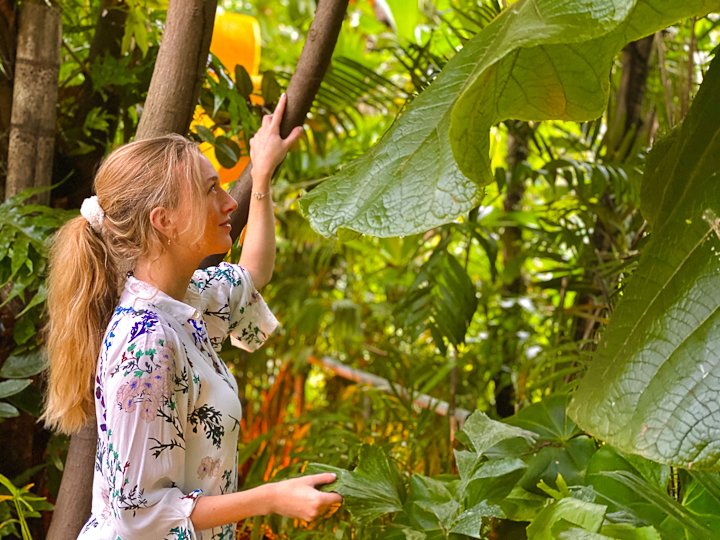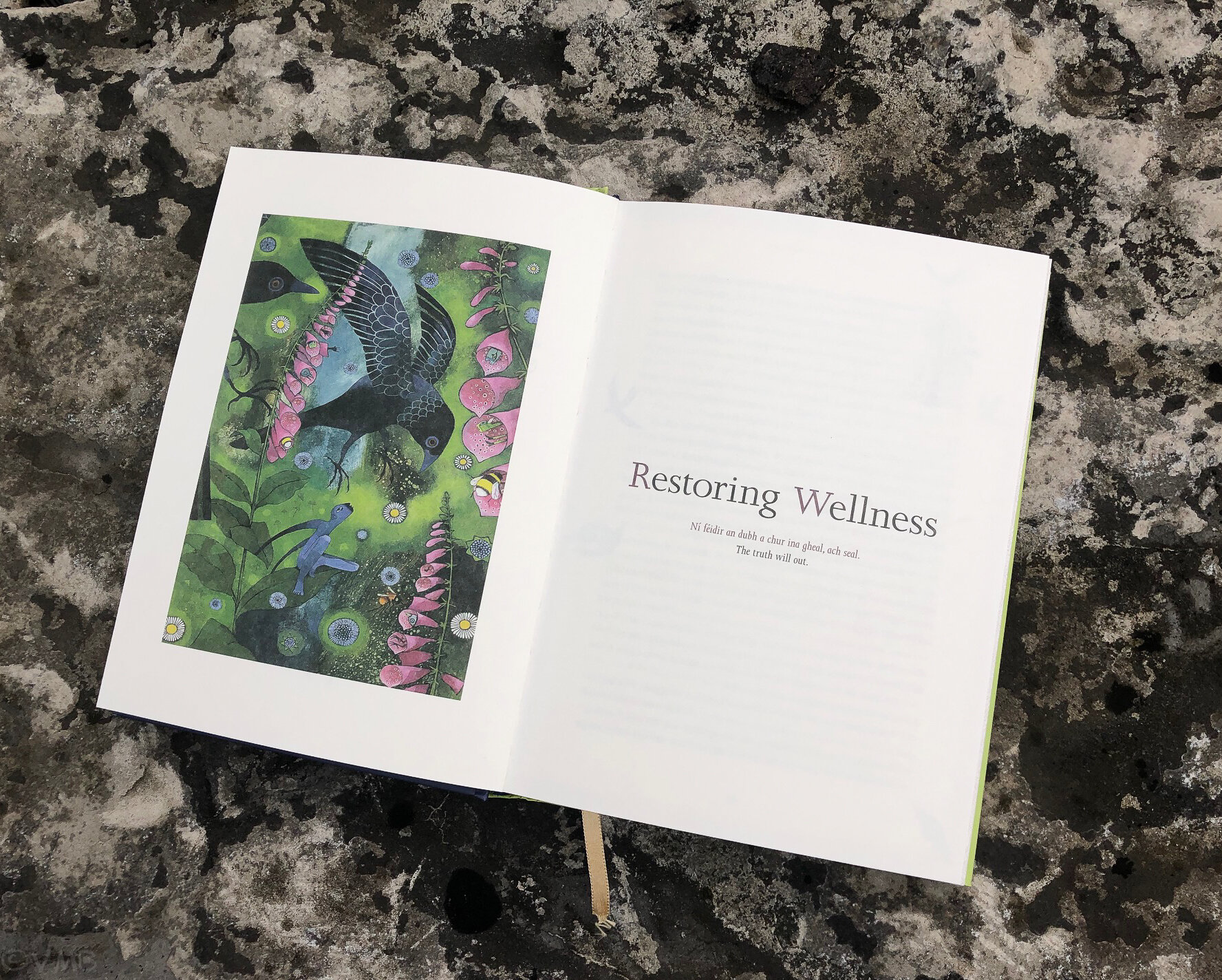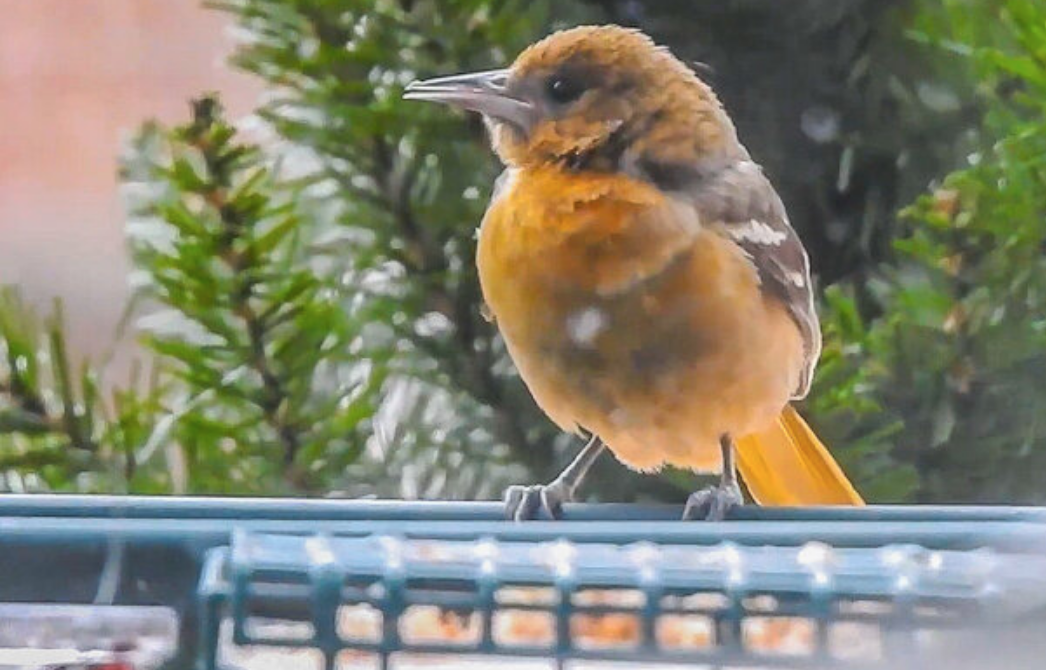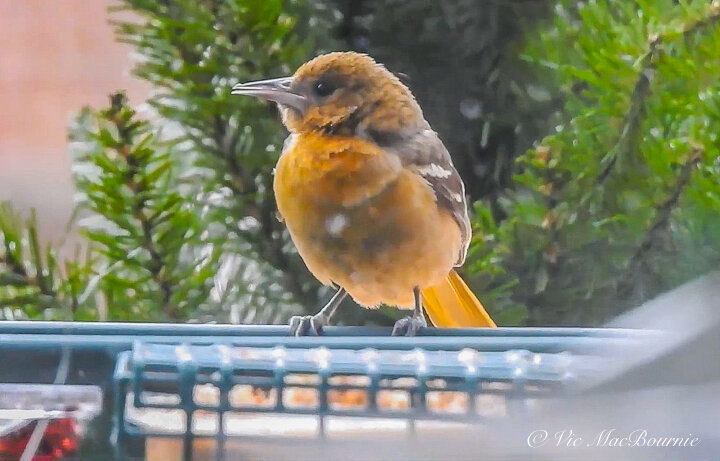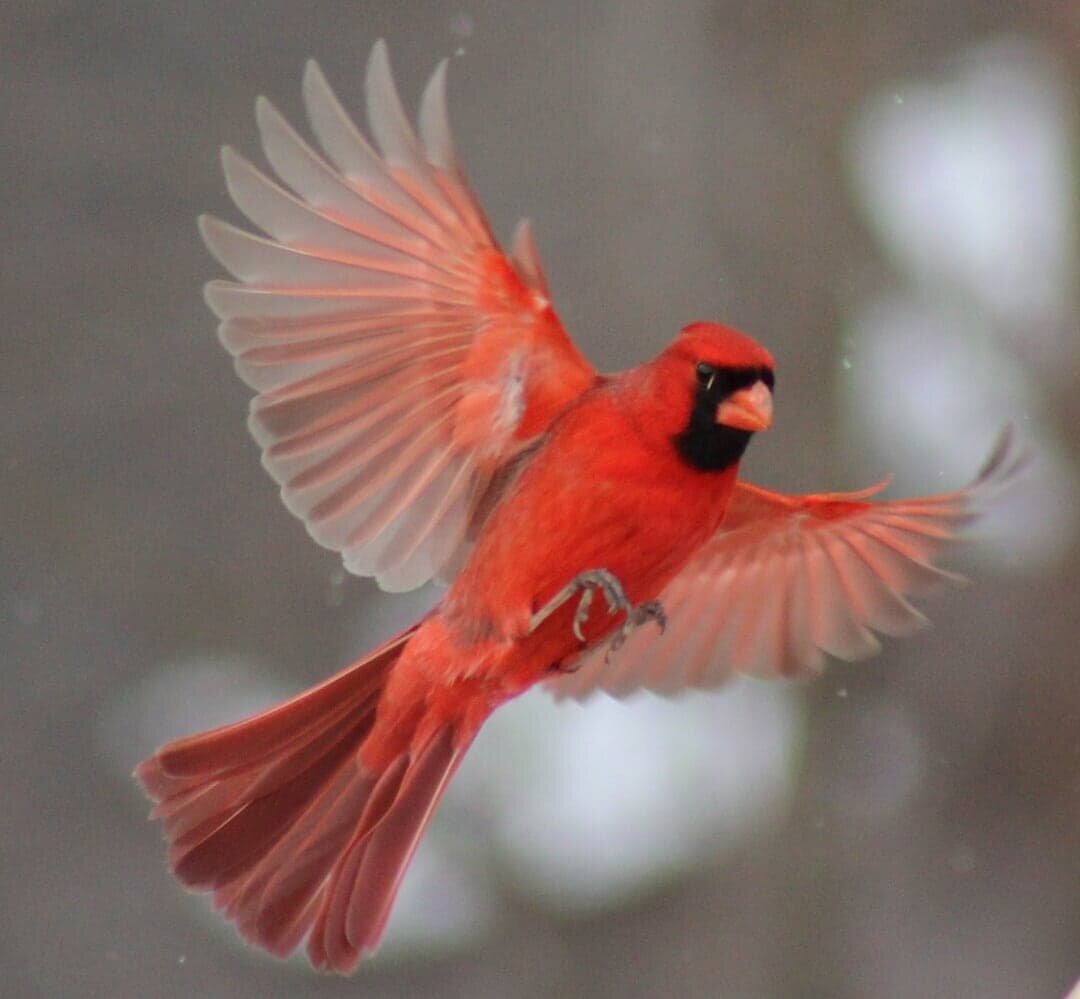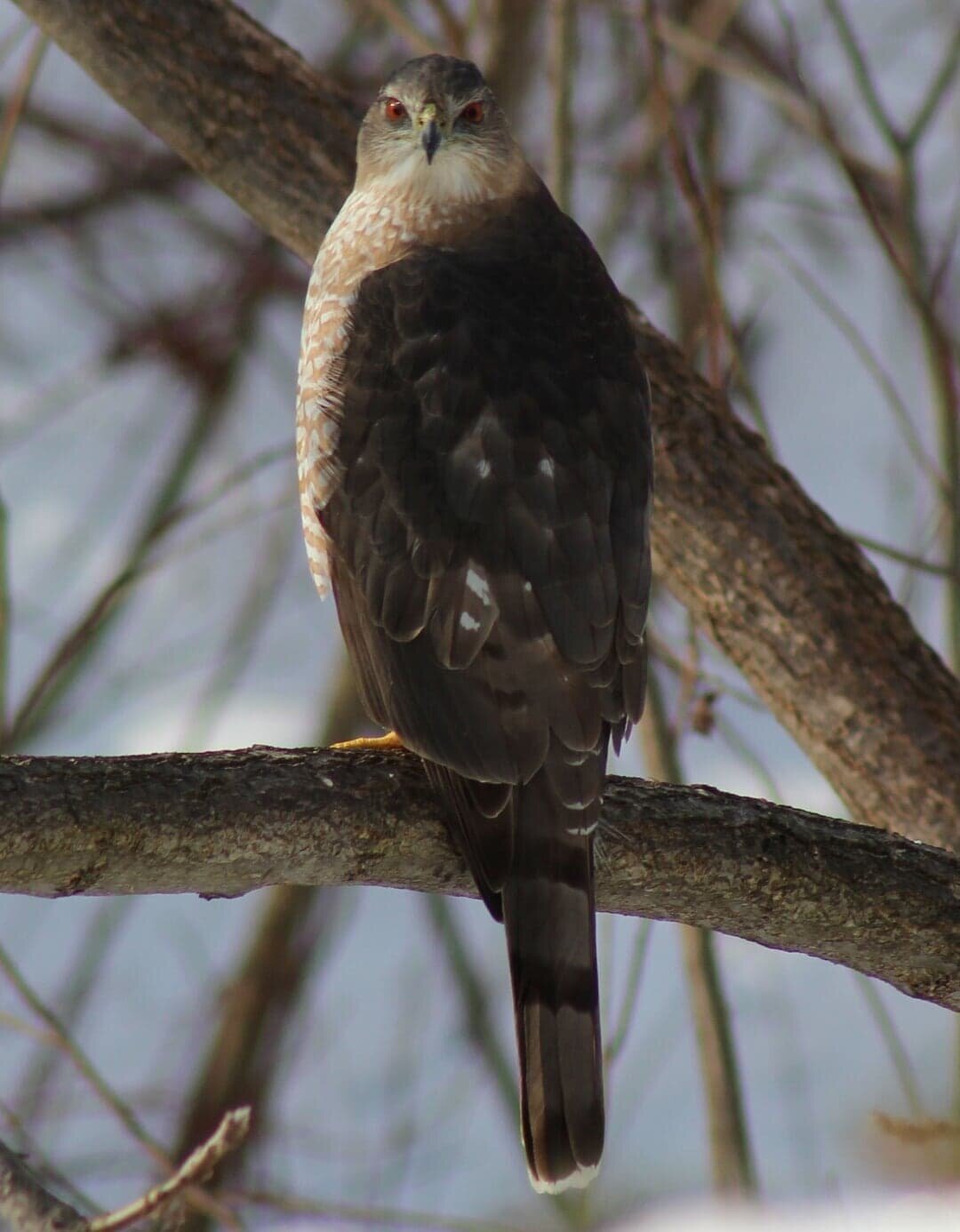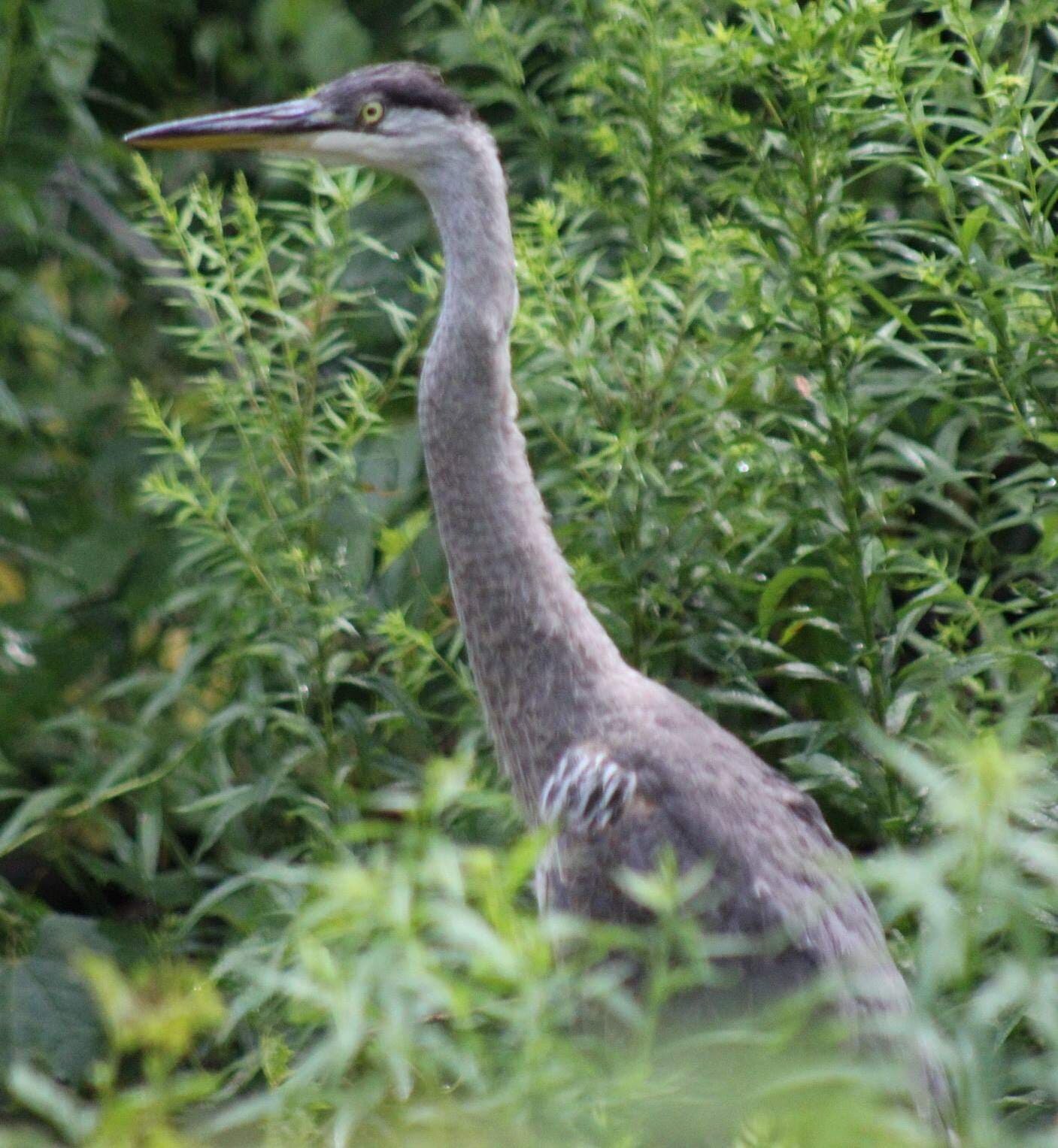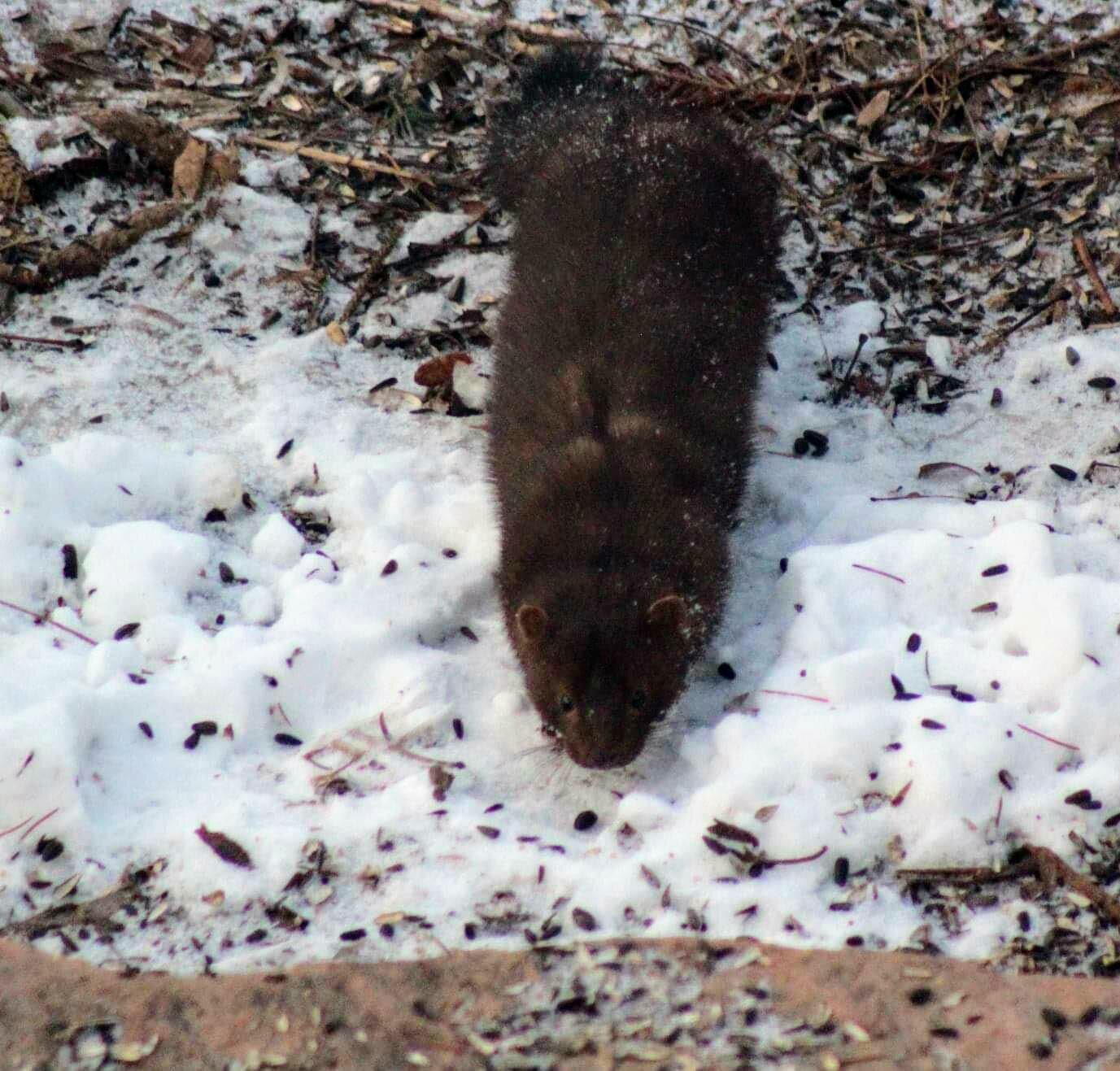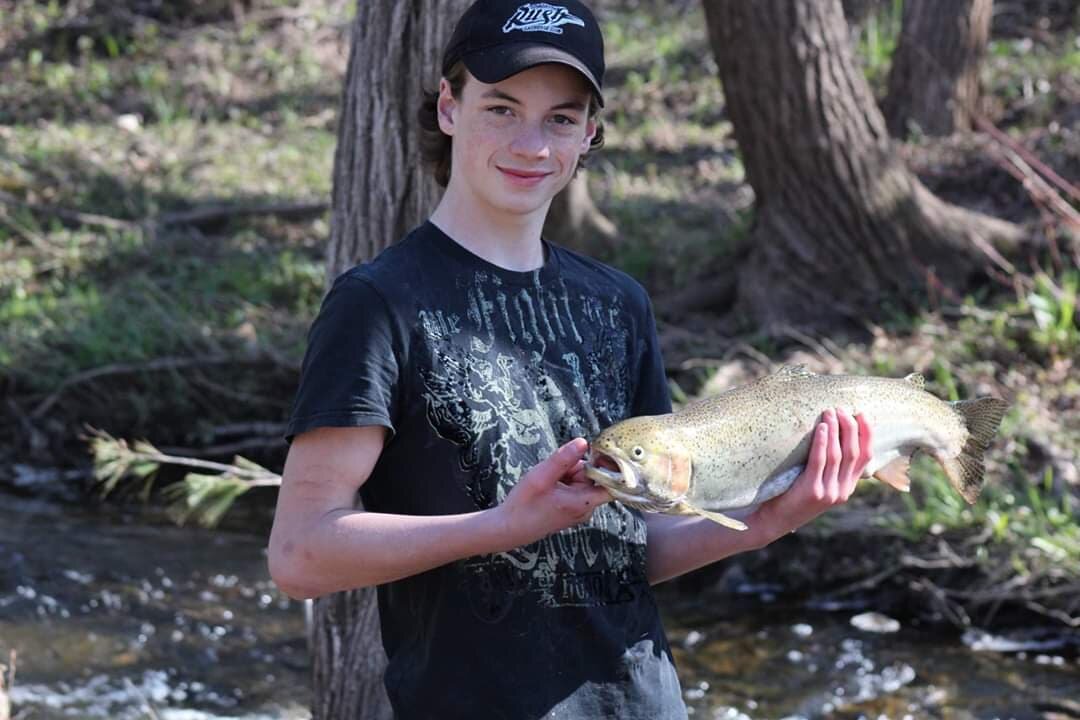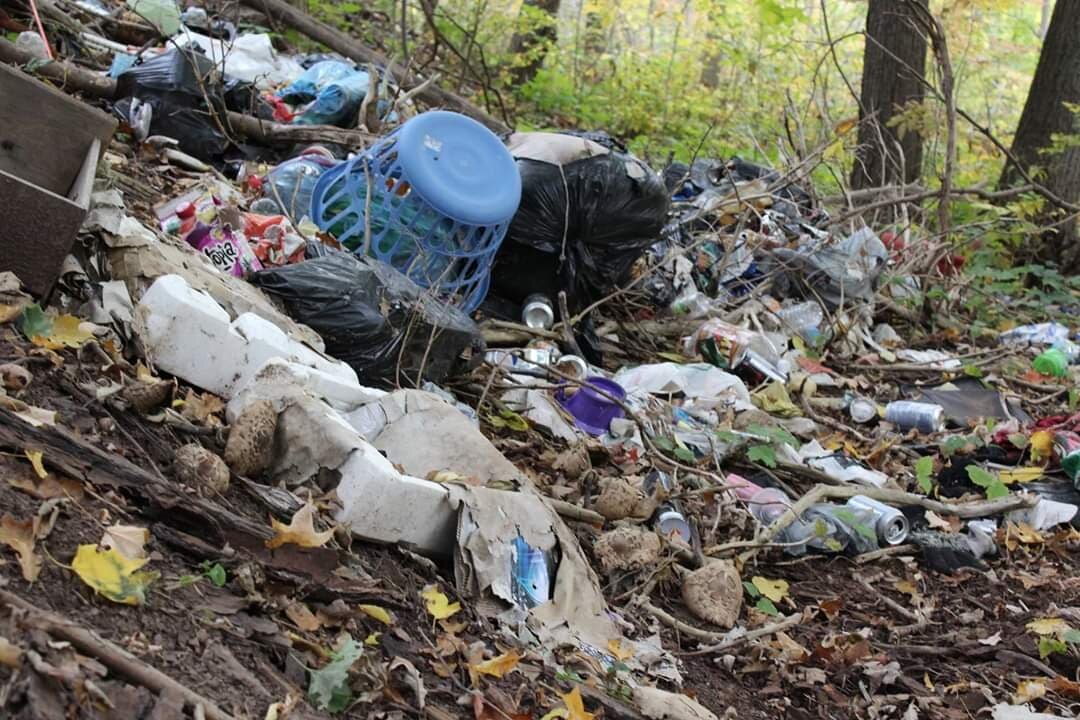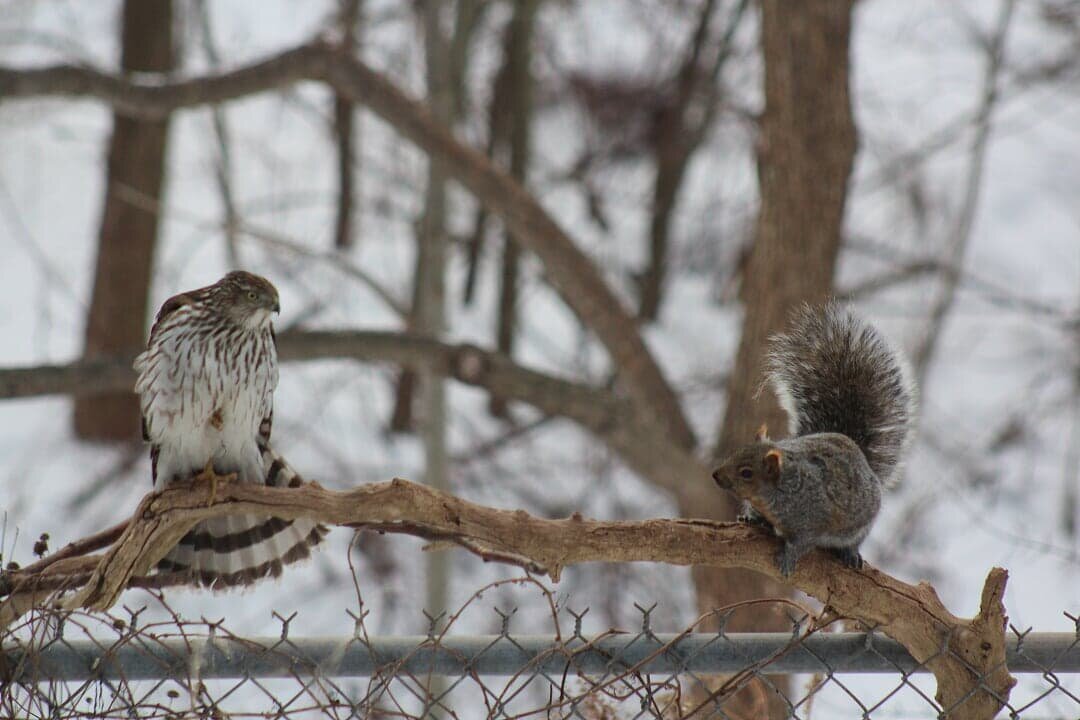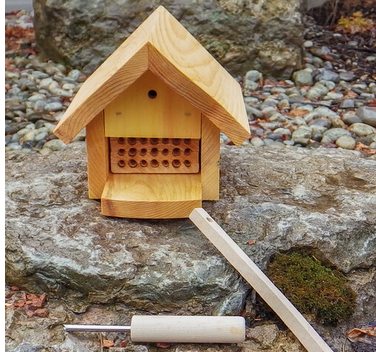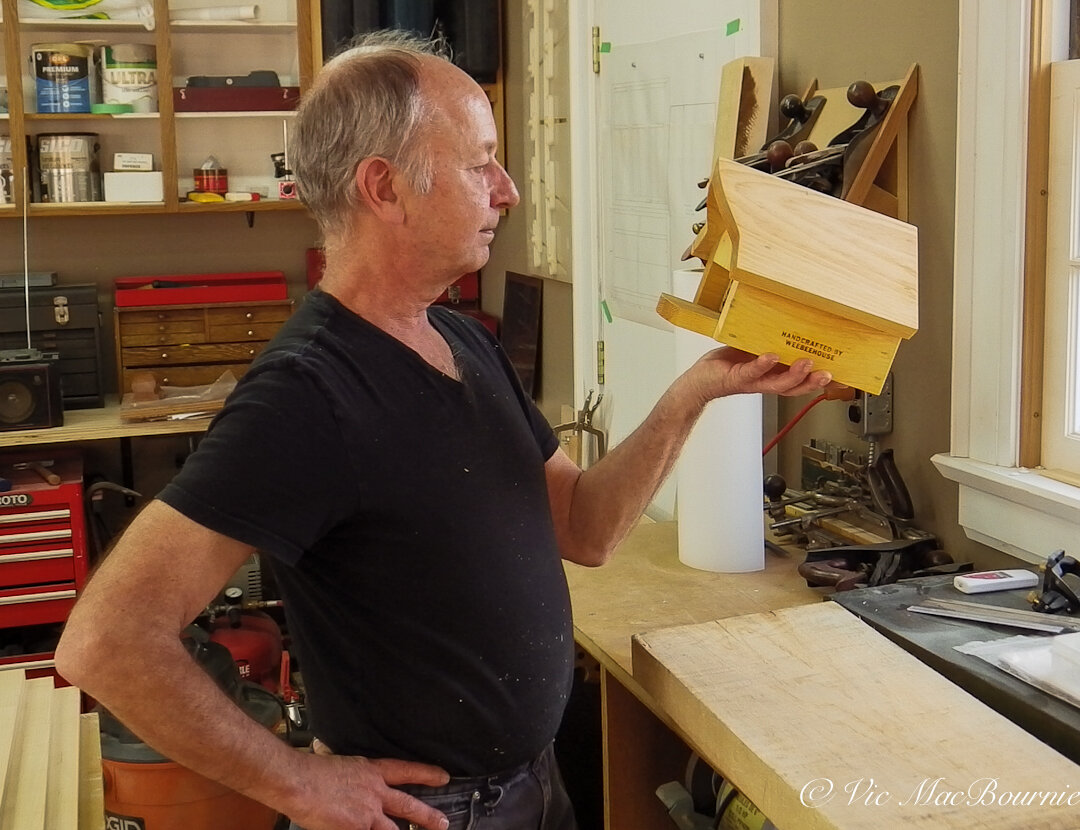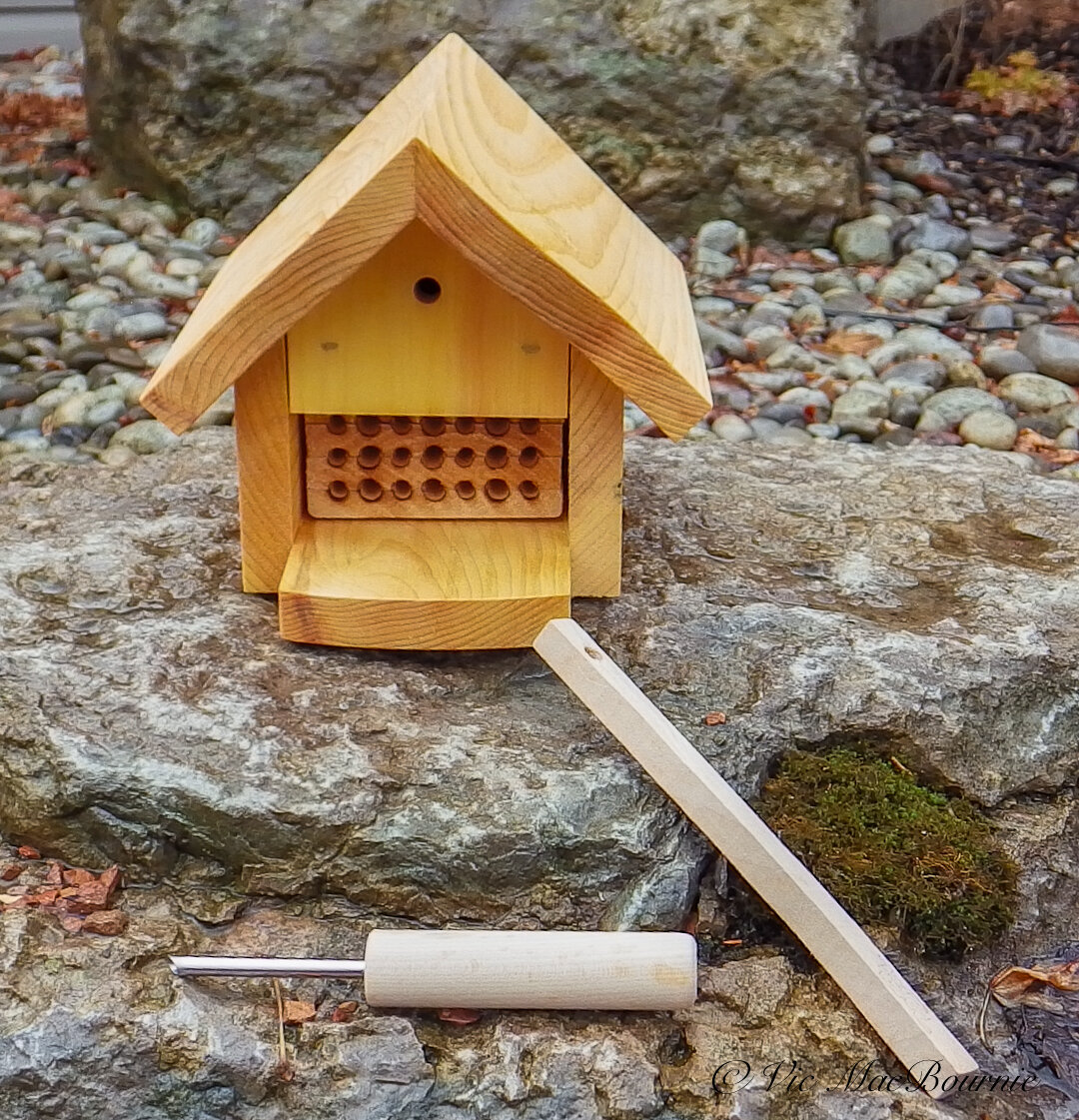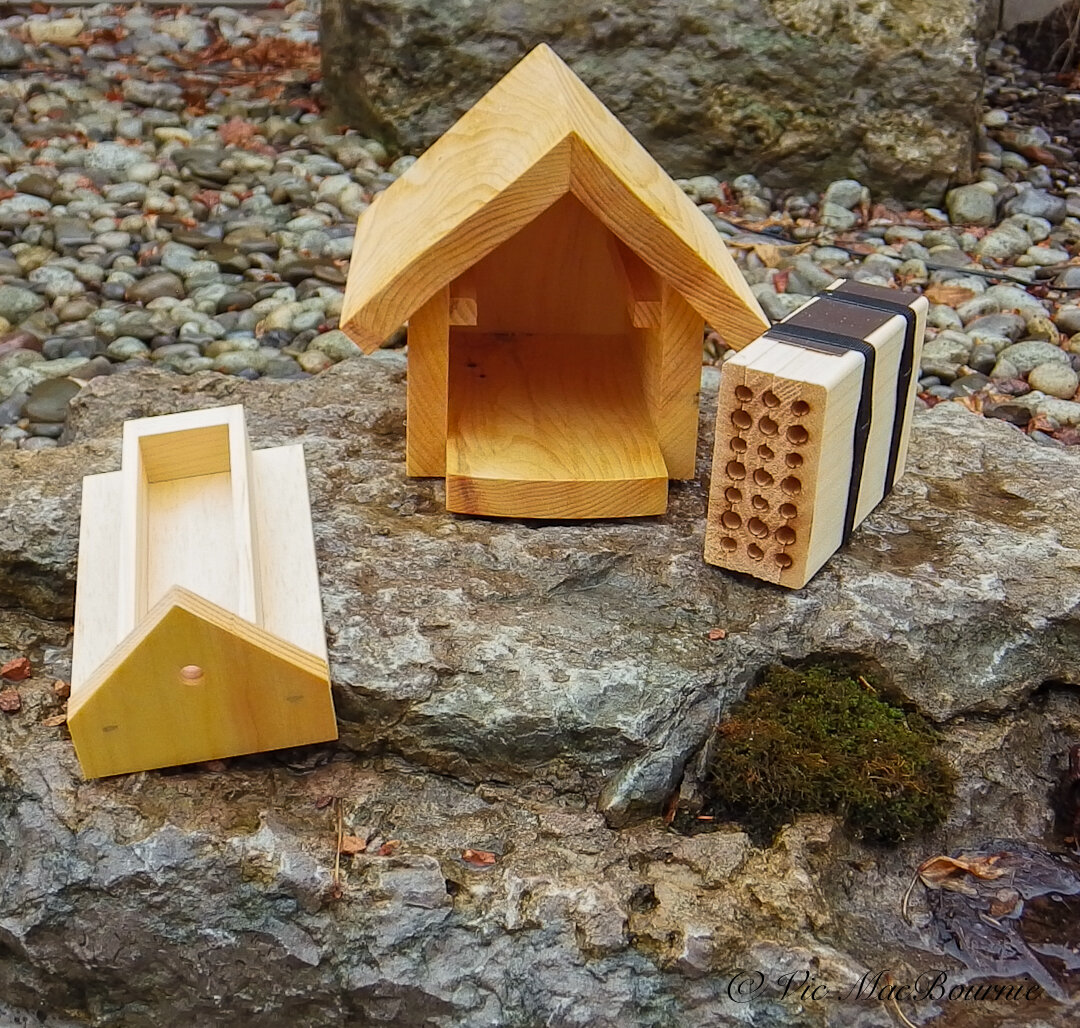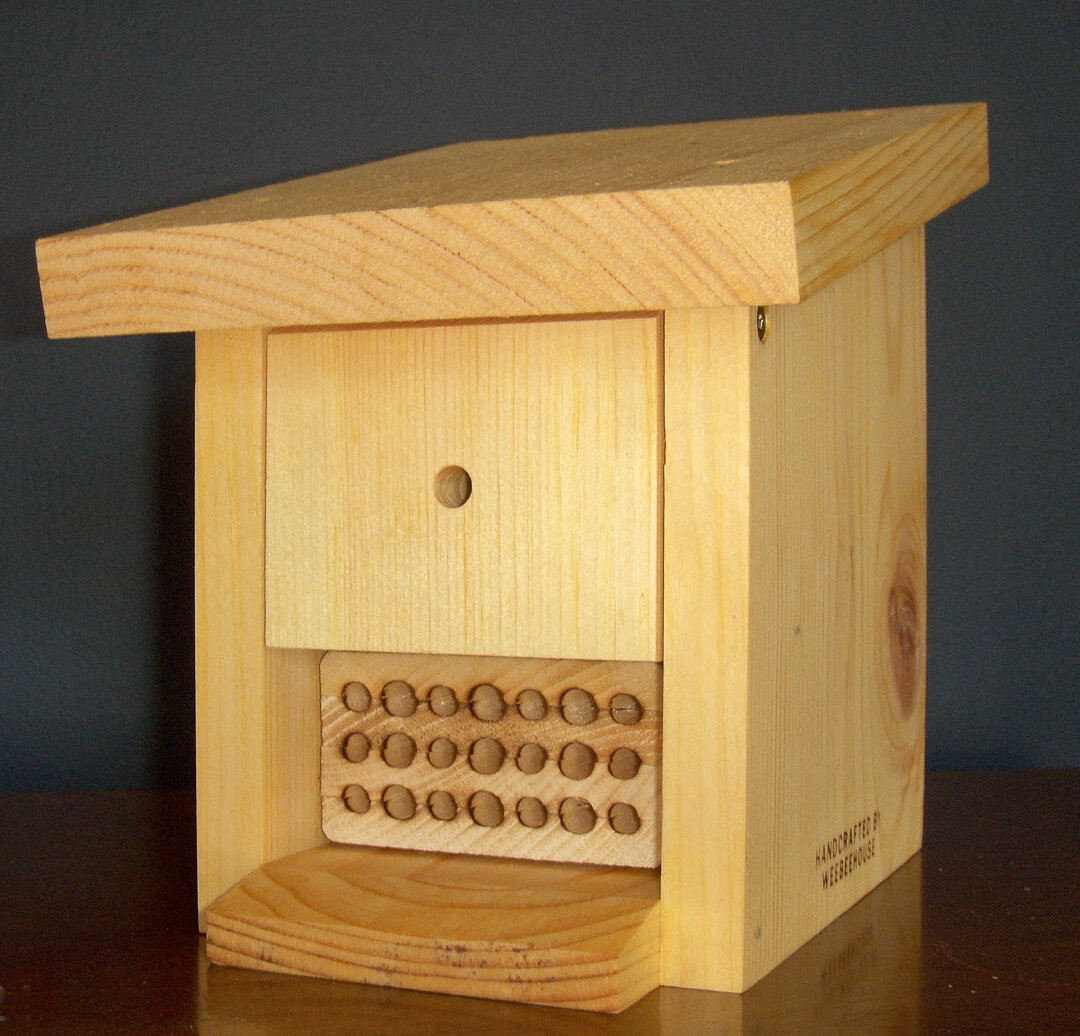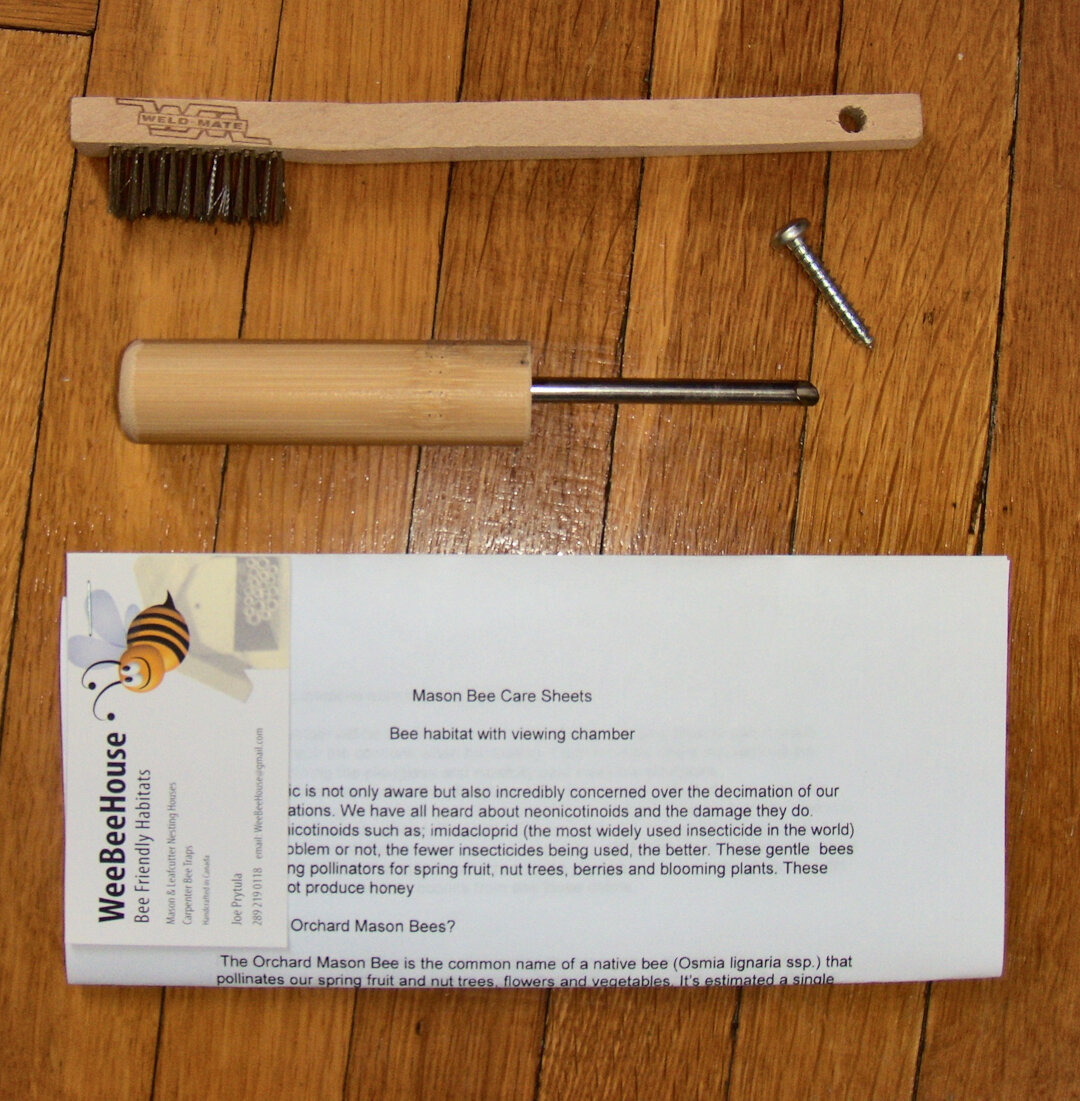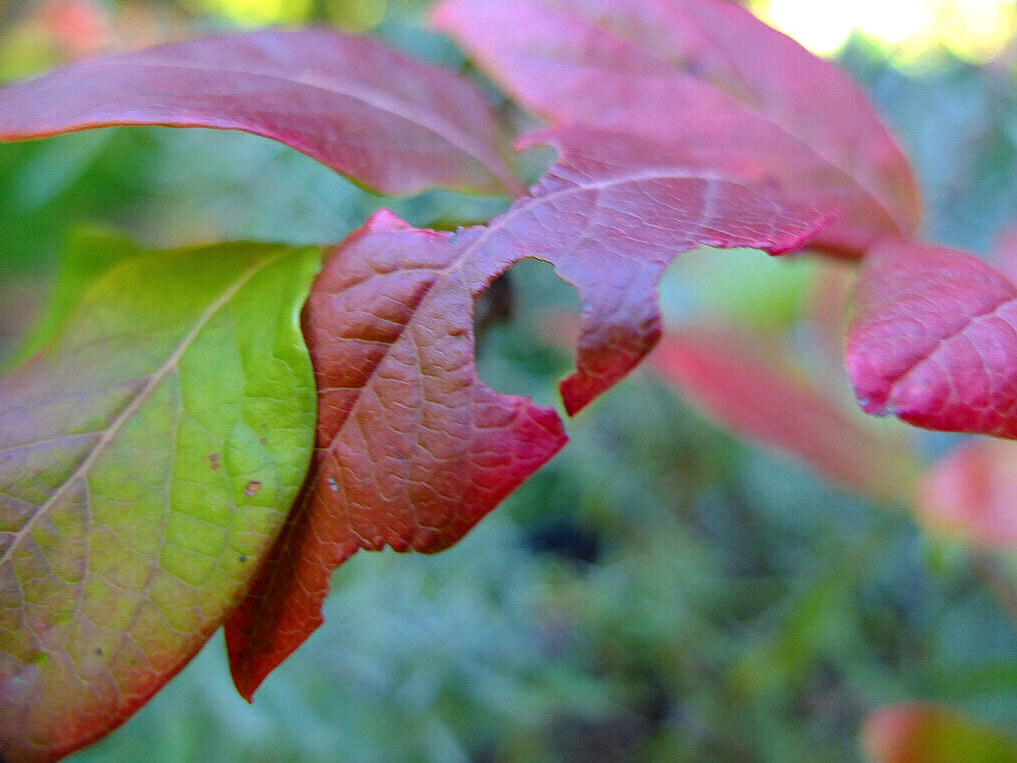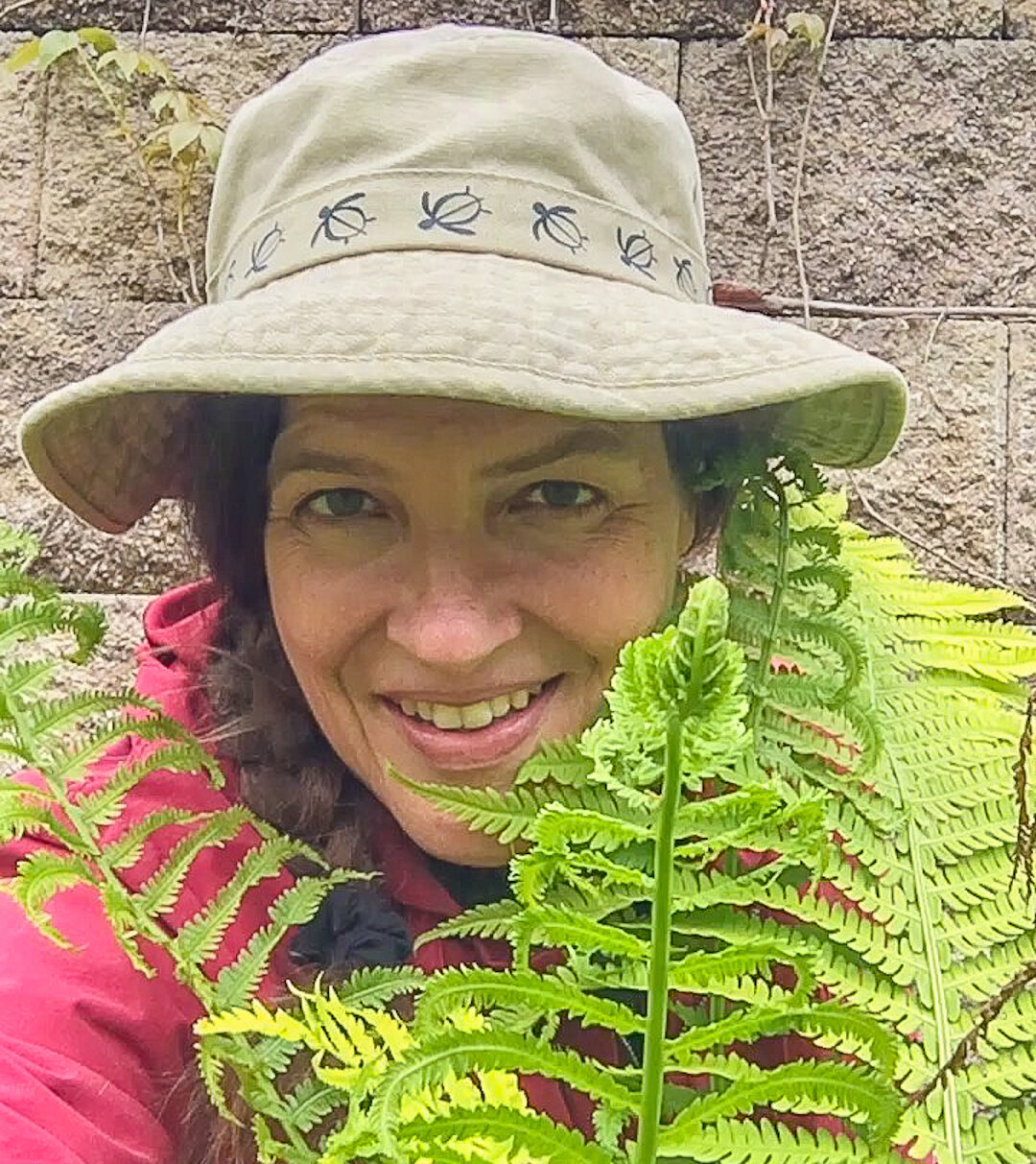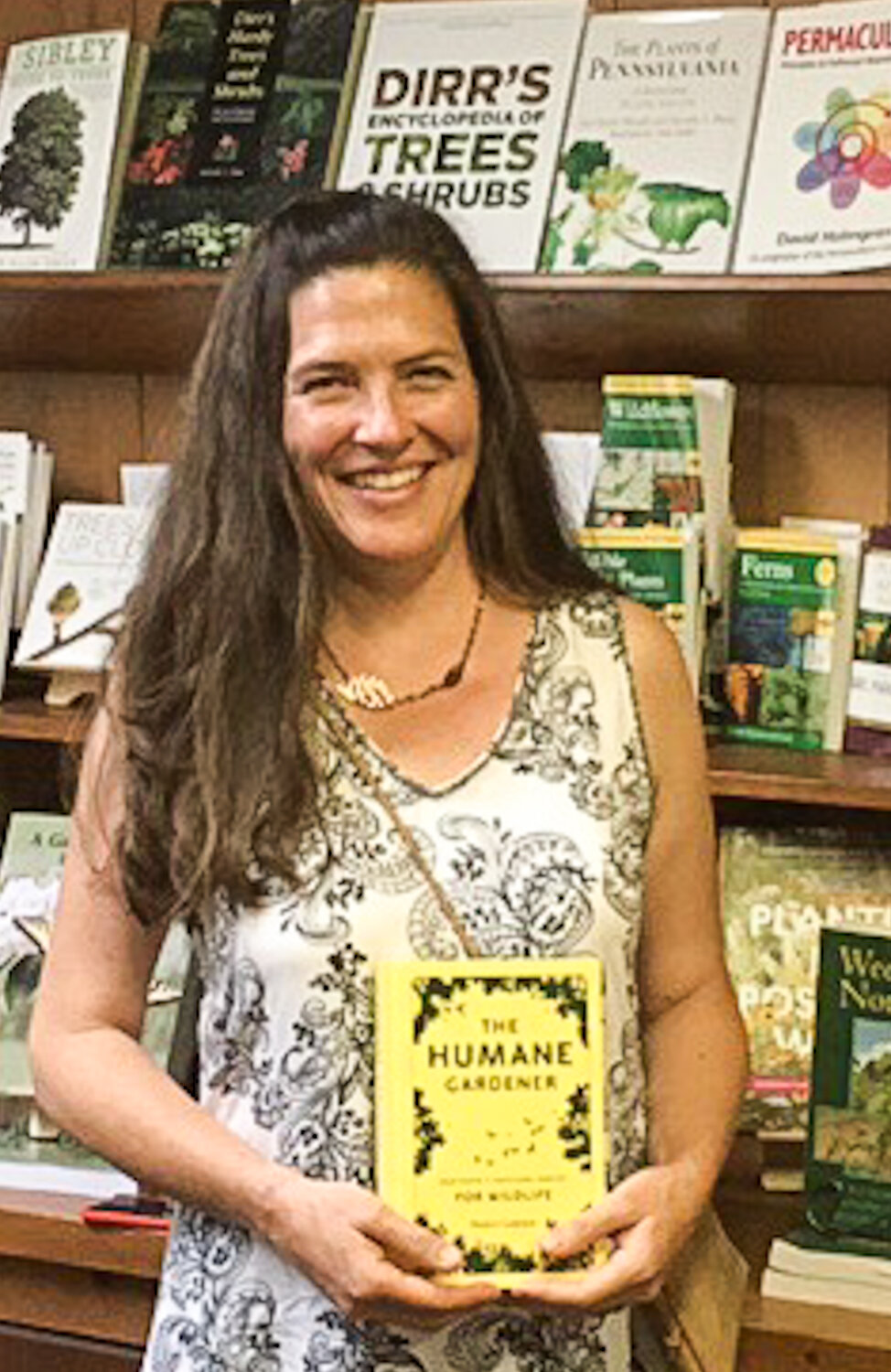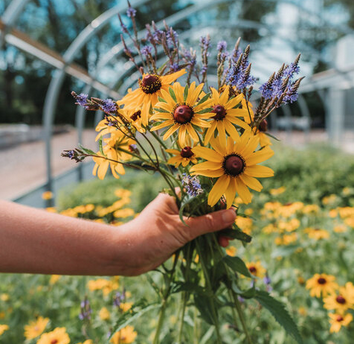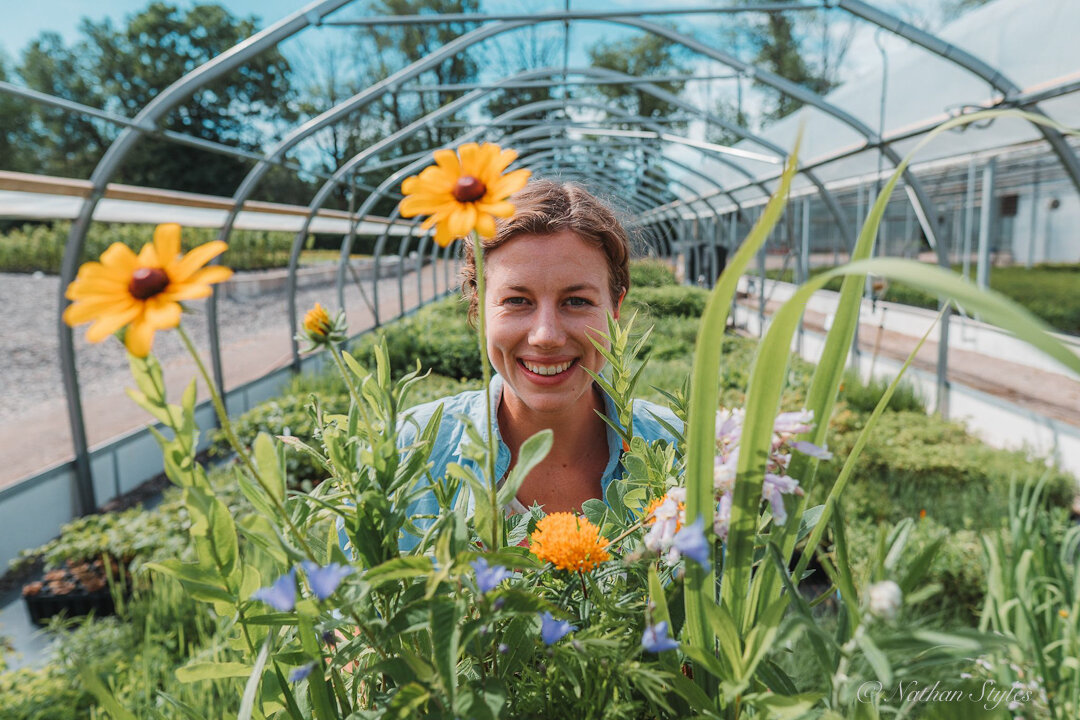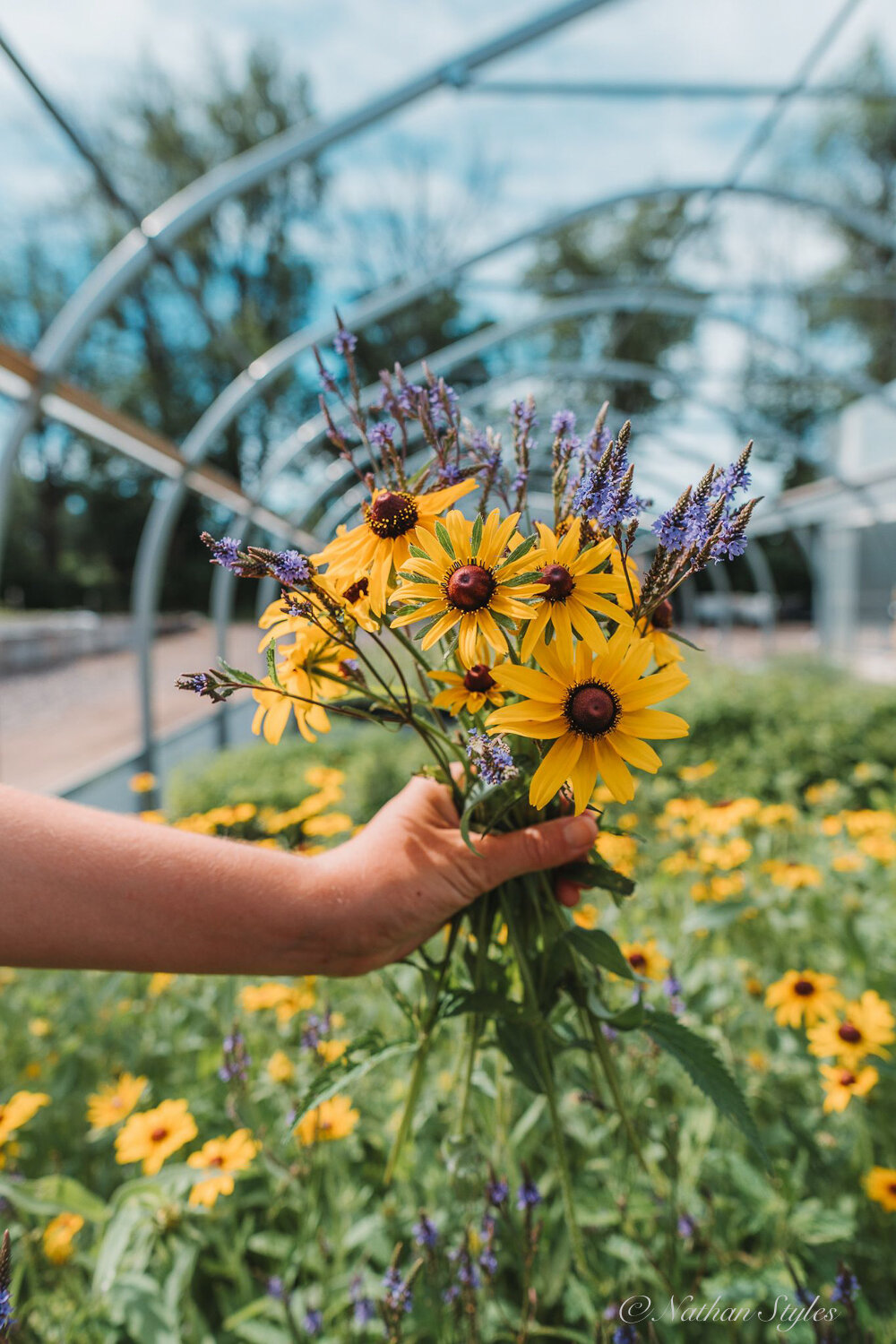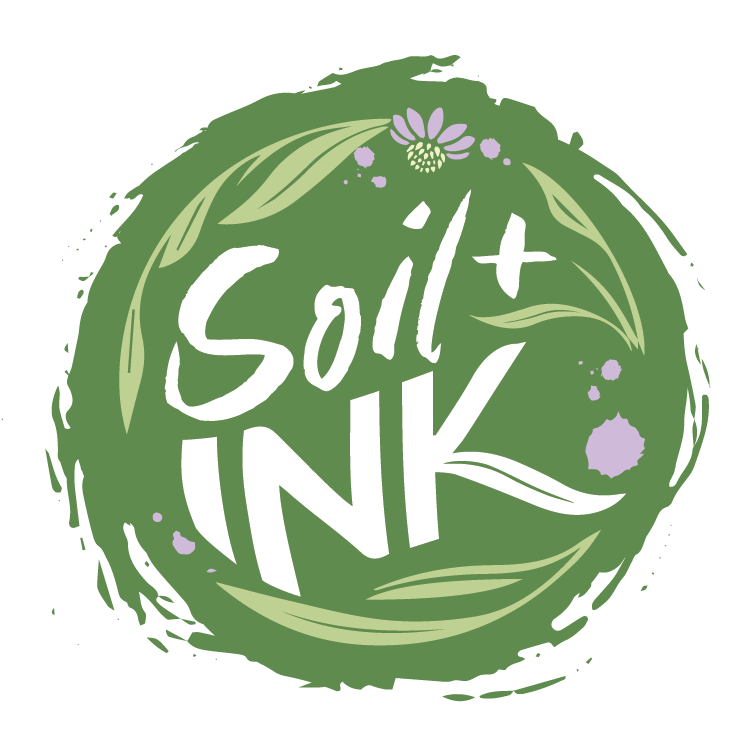The Internet of Nature: How technology could shape our urban forests of the future
Dr. Nadina Galle and her work with the Internet of Nature uses technology to shape the future of the urban forest. The Canadian born former Fulbright scholar and MIT researcher now at the University of Amsterdam uses ground sensors and satellite imagery among other technologies to help cities monitor, care for and protect the urban forest to provide a better place for people to live in future.
New book, Nature of Our Cities, celebrates optimism in the midst of a changing planet
Dr. Nadina Galle may have got her “eureka moment” at the age of 12, but it took the release of her first book, The Nature of Our Cities, in June, 2024 to bring the “moment” into focus.
Terrified, at age 12, after watching a Canadian documentary called The End of Suburbia, she worried that the lifestyle she enjoyed growing up in a Canadian suburb in Waterloo, Ont., would eventually lead to the “collapse of the society (she) was born into.”
She remembers a happy childhood playing with her friends in their big, grass-filled backyards. It was a lifestyle, however, that even at an early age, she realized had its flaws.
“At the age of 12, I decided it would become my life’s mission to build better places for people to live,” Dr. Galle explains in her highly entertaining and informative TEDx talk.
“Gardeners, more than anyone, understand the intimate relationship between people and nature. This book offers them new, exciting tools—from AI-powered sensors that water newly planted seedlings to intelligent water gardens that mitigate floods—that can help anyone get involved in transforming where they live into resilient, vibrant ecosystems”
“Born in the Netherlands and raised in Canada, I developed my love for the outdoors and my commitment to conserving nature from a young age. Reading works by Jane Jacobs and James Howard Kunstler as a teenager, I questioned the imbalance between nature and the encroaching urban sprawl I saw around me in suburban Canada,” explains the former Fulbright scholar and MIT researcher.
Dr. Nadina Galle is at the forefront of using smart technology to protect the urban forest.
Today, Dr. Galle is working at the forefront of smart nature-based solutions, exploring how technology can transform the way we care for our natural urban environment. Her website The Internet of Nature is a treasure trove of information about how technology can benefit the urban forest including links to her cutting-edge podcasts.
“At the age of 12. I decided it would become my life’s mission to build better places for people to live.”
On her quest to build better places for people to live, she studied ecology, evolutionary biology, earth sciences, and eventually went on to earn a PhD in Ecological Engineering. In her fascinating TEDx Talk, she defines Ecological Engineering as the “design of sustainable ecosystems that integrate human society with its natural environment for the benefit of both.”
Remember that inquisitive, yet terrified little 12-year-old girl’s promise to herself?
Well, her lifelong pursuit of learning eventually led her to her PhD in Ecological Engineering at MIT and University College Dublin and what has emerged is what she calls “Internet of Nature.”
If that is not enough, Dr. Galle has just released her first book: The Nature of our Cities, Harnessing the Power of The Natural World to Survive a Changing Planet.
The 304-page book explores how innovators from around the world are combining urban nature with emerging technologies, to protect the planet’s cities from the effects of climate change and safeguarding the health of their inhabitants.
Dr. Galle explains in the book’s promotional material: We live in an age when humanity spends 90% of its time indoors, yet the nature around us—especially in America’s cities—has never been more vital. This distancing from nature has sparked crises in mental health, longevity, and hope for the next generation, while also heightening the risks we face from historic floods, heatwaves, and wildfires. Indeed, embracing nature holds untapped potential to strengthen and fortify our cities, suburbs, and towns, providing solutions spanning flood preparation, wildfire management, and promoting longevity. As ecological engineer Dr. Galle argues, nature is our most critical infrastructure for tackling the climate crisis. It just needs a little help.
What does all this mean to us urban and rural woodland gardeners?
Dr. Galle says Ferns & Feathers readers will appreciate her book on a number of levels.
“Gardeners, more than anyone, understand the intimate relationship between people and nature. This book offers them new, exciting tools—from AI-powered sensors that water newly planted seedlings to intelligent water gardens that mitigate floods—that can help anyone get involved in transforming where they live into resilient, vibrant ecosystems,” Dr. Galle told me.
• To order a copy of Dr. Galle’s book from Amazon, go here.
How gardeners can help protect the urban forest?
What does all this mean to the average woodland/wildlife gardener, or simply the urban homeowner living with a typical yard?
It means that although we gardeners may think of our gardens as ours alone to enjoy and experience, they are actually part of a much larger environment that makes up the urban forest – a forest that in most urban areas around the globe is under severe threat from natural (climate change) and human intervention.
Irish garden designer and author Mary Reynolds promotes this approach to natural gardening in her book The Garden Awakening where she advocates for homeowners to consider their properties like “natural arks” that form smaller islands of nature that can join together to provide much larger islands of native plants, trees and natural environments. (You can explore her approach further in my article about her work here).
This approach to urban gardening also means that traditional thinking probably has to change to ensure that our urban forests provide us with the natural environment so many of us depend on for our future well being. If the Covid-19 pandemic has taught us anything, it has made us more aware of the importance of green spaces and the natural environment to our own well being.
Protecting the urban forest has never been more important
The very fact trees sequester carbon is reason enough to plant as many new trees as possible. However, it’s been proven that older, existing trees (and their soils!) are even more effective at sequestering carbon, so ensuring their protection and continued health in our urban areas is vitally important.
Every year the urban forest is under greater threat, Dr. Galle explains in her TEDx Talk. This is hammered home by the fact that every week approximately 3 million people move (or are forced to move) to cities around the globe.
“Everyone is talking about how many people are moving to cities, but no one is talking about what kind of life they will live once they move there,” she explains.
How we protect the urban forest in the future is what Dr. Galle wants to change, and she wants technology to be leading the way. (More on that later in the article. First it’s important to understand our role as gardeners and homeowners in the whole process.)
“Roughly 50-70 per cent of the urban forest in any given city is on private/homeowner land, which means only 30-50 per cent is actually in the maintenance area of the city,” Dr. Galle explains via email to Ferns & Feathers from her home in the Netherlands.
“This is crucial because it shows the massive role homeowners can have in the development and longevity of the urban forest.”
An important point author Peter Wohlleben makes in his NYT best selling book The Hidden Life of Trees, (link to an earlier article on the book) and one that Dr. Galle echoes in her writings and talks, is that a tree planted in the heart of an urban landscape has a typical lifespan of a mere 7-30 years. The same tree planted in a natural forest can easily live to 100 years and considerably more given the right conditions.
Dr. Galle has even identified Wohlleben and the UBC forest ecologist, Dr. Suzanne Simard, whom he covers extensively in his book, The Hidden Life of Trees, as a major influence in her work, particularly research on how trees communicate through underground fungi that can connect to the roots of other trees (and plants) to create what’s called a mycorrhizal network. A mycorrhizal network can influence the survival, growth, health, and behavior of the trees linked within its extensive network or community. Trees use their network to not only communicate, but to share resources, often stemming from the resources of the “Mother Tree”, the most connected tree in the network.
This underground network, Dr. Galle emphasizes, needs to not only be protected through proper watering, fertilization and care, but encouraged to branch out in urban environments whenever possible. Success will depend on a multitude of factors including the cooperation of individual homeowners to protect the trees on their properties.
How valuable is a single tree on your property?
In fact, in his follow-up book The Heartbeat of Trees, Wohlleben gives an example of how a study conducted by Chicago University researchers found that a single tree planted on the lawn of an urban property can increase the benefits to the homeowner by the equivalent of an annual pay increase of $10,000. The study, conducted with thousands of Toronto, Canada residents, also showed that two trees planted in the front could provide the health and well-being benefits equal to an annual income increase of $20,000.
If this doesn’t convince homeowners of the importance of maintaining their own trees in their front yards, it’s hard to imagine what will.
“Most homeowners don’t realize the trees on their land (may be) protected by a private tree ordinance, meaning you can only cut down trees (even when you own the land!) with a permit,” Dr. Galle explains. “Otherwise, you can be fined, or even jailed (though I doubt that’s ever happened).”
“Many cities, like Santa Monica, for example,currently don’t have private tree ordinances, but after remote sensing analysis revealed they’d lost 20-30 per cent canopy cover on private residences in just a few short years, they’re rapidly trying to instate a private tree ordinance. Otherwise, there will be no urban forest left!" says Dr. Galle. (Readers can learn more about Santa Monica’s urban forester and his struggles to maintain its urban forest in a S2E10 of the Internet of Nature Podcast here.)
How can homeowners preserve and protect their trees?
Dr. Galle recommends four ways homeowners can preserve their trees and do their part to ensure the longevity of the urban forest.
• Understand your trees: use a tree identification app to understand what grows around you and learn as much as you can about them and their history.
• Don’t cut down your trees unless absolutely necessary. If you must cut a tree down, replant smartly, meaning planting native trees that will thrive in that location.
• Water your trees when it’s hot and dry, and use a sensor to help you understand when and how much water you have provided the tree so you don’t over water, which can also be dangerous to the tree.
• Find and invest in a good local arborist for regular tree health inspections. Regular inspections of your trees will help to keep you, your property, and the tree safe.
How technology can help protect the urban forest
Protecting individual trees is certainly a step in the right direction, but Dr. Galle is more focused on protecting the entire urban forest.
It’s obviously a momentous task that, up until recently, was often the primary responsibility of city planners, work crews and arborists working tirelessly to provide what they thought the trees, plants and wildlife needed to prosper.
What Dr. Galle and her co-researchers found after talking to these critical workers at the frontlines of urban forest protection is that they really did not know what was needed to protect the urban forest in its entirety. Their expertise certainly guided them in the right direction, but specific day-to-day, week-to-week, season-to-season evidence was sorely missing.
The result: Protecting the urban forest was, at least to some extent, a guessing game and climate change is making guessing that much more difficult.
So, Dr. Galle began to ask: “What if technology could step in where Earth’s biological communications networks have been altered and disrupted?”
And so, the Internet of Nature (IoN) was born.
What is the Internet of Nature?
Working with scientists, researchers and companies around the world – including Canada, the U.S., Australia, China, and across Europe – Dr. Galle is developing a multifaceted approach to monitoring the health of our urban forests through technology: more specifically the internet.
“After seeing both the ‘Smart City’ and ‘Green City’ agendas gain popularity, irrespective of one another, I began to explore ways to integrate these precision methods to build greener and smarter cities, she explains in an interview with the Amsterdam International Water Web,.
Dr. Galle explains that “The Internet of Nature (IoN) makes use of emerging technologies, like sensors, satellite imagery, computer algorithms, and many more, to represent urban ecosystems and turn green spaces into data that helps us better understand how to manage them.”
She goes on to explain that: “It doesn’t only collect data to help monitor these important spaces, but also reconnect city dwellers to nature — and better understand how people feel about it.”
“In my research and work, I have experimented with sensors, satellite and drone images, online reviews, big data, plant ID apps, and many more, to find the best ways to measure and monitor urban nature. From that, the Internet of Nature arose, helping us monitor nature, but also reconnect people to the greenery at their doorstep.”
As part of her lifelong ambition to provide healthier and better places for people to live, Dr. Galle explains that IoN technologies have experimented with sentiment analysis to mine citizen opinion of green space by training a computer to ‘decipher’ online reviews, interaction and engagement rates. “This way we learn more about how people experience green spaces.”
Sentiment analysis algorithms would, for example, enable cities to help establish how people feel about certain urban green spaces including parks compared to more natural areas based on reviews left on sites like TripAdvisor, or on-line questionnaires.
Information gathered from underground sensors is sent to an ipad where moisture and other factors can be monitored to help protect the trees in the area. Photo courtesy of Soilmania.
How sensors play a role in protecting trees?
By using electronic IoT sensors designed and built in the Netherlands by SoilMania, scientists and arborists are able to monitor tree’s needs, stresses and environment at any time through a computer and even apps on a phone. This information can then be extrapolated to all the trees in a given area and solutions provided to protect them.
SoilMania, founded only four years ago, is already being used on crops, fields and greenhouses; on golf courses and sports fields; as well as in public and green areas including entire cities to monitor the needs of the urban forest.
It may be nothing more than providing information telling arborists when a tree needs deep watering. The in-ground sensor will also tell workers exactly how much water and or fertilizer the trees need and provide information about how much water has reached the trees’ roots.
Sensors are even able to monitor, for example, the salt in the soil around a tree’s roots that can build up as cities continue to spread salt on roads during winter months. If salt levels build to dangerous levels, the company even provides a solution to bind with the salt or other toxic elements to neutralize them before it can damage the tree. The method has already prevented hundreds of untimely tree deaths related to salt damage.
During her time at MIT’s Senseable City Lab, she was interested in seeing if there was microbial activity in the soil around inner-city “street trees” using sensors to detect the activity and therefore the health of the tree.
This research also led to the possibility of using remote sensing technology through satellite imagery. “I’m particularly interested in hyperspectral imagery” that can pick up on vegetation and the health of vegetation in minute detail from satellites that are able to orbit the earth twice in a single day. Although such imagery is already being used in agriculture and forestry, significantly improved resolution now enables scientists and arborists to actually “measure the health of individual trees.
Information is gathered by the tree sensors and sent via cloud computing to computers to monitor soil around a tree or group of trees roots. Provided courtesy of Soilmania
In conclusion
Dr. Galle’s childhood dream of creating a better place for people to live continues to be a work in progress. Her commitment and dedication to achieving this goal has led her down a path of knowledge and academic excellence that is sure to end in success – exactly what that success entails is still yet to be written.
However, there are many barriers standing in the way – not the least the acceptance needed of how technology can solve the problems large cities face when it comes to protecting urban forests.
Added to that is the continued damage inflicted on our urban forests by nature, climate change, and most importantly, homeowners who either don’t know, or worse, don’t respect the important part trees play in our lives.
The challenges are too many for any one person to tackle, but, with the power of the internet, maybe, just maybe Dr. Galle and her team can find those solutions.
Let’s hope so. Our lives may depend on it.
Author Profile: Vic MacBournie is a former journalist and author/owner of the award-winning website and newsletter Ferns & Feathers. He writes about his woodland wildlife garden that he has created over the past 25 years and enjoys sharing his garden photography with readers.
The Garden Awakening will change the way you garden
Mary Reynolds’ The Garden Awakening is an important book during these troubled times. It is both a gardening book and a road map we all need to follow into the future. For some it is a treasure map to help them rediscover nature and themselves. For others, it will provide them with a new way of looking at their gardens, their land and their life. Please, click on the link for the full review.
The Garden Awakening
Designs to Nurture our Land & Ourselves
By Mary Reynolds
“If nature is left to its own devices and without imbalances in the ecosystem such as the overpopulation of hungry deer or an infestation of rabbits it will reclaim its territory and become Woodlands once more.”
This might be one of the most inspirational gardening books I have ever read.
It’s certainly not your average how-to gardening book. If you are looking for a typical gardening book, The Garden Awakening might not be for you.
Beautiful illustrations by artist Ruth Evans both on the cover and throughout the book.
But if you are interested in the environment, restoring your garden to a healthy, productive space and/or creating a Woodland naturalized garden, then you owe it to yourself to spend some time with Mary Reynold’s book, The Garden Awakening, Designs to Nurture our Land & Ourselves and her vision for the future of gardening.
Since this writing, Ms Reynolds has published a second informative book titled We Are The Ark. This follow to The Garden Awakening, expounds on her successful approach that each garden can be a small Ark in a world for where wildlife desperately needs our help.
For more information on using native plants to restore your garden, take a moment to check out my article on the importance of using native plants in your garden. For full post go here.
An important book at a crucial time
The Garden Awakening is an extremely important book for the time. It’s a reminder that we are destroying the very land we depend on for survival. It’s a reminder that the world we live in cannot continue to absorb this abuse and not unleash its own fury back upon us.
And, as climate change continues to change the world we live in, it’s important that we as inviduals take action to stem the tide.
But Reynolds offers solutions to problems that we need so desperately in these trying times.
Her inspirational book actually provides a roadmap for anyone interested in doing their part to not only protect but revive the land they live on. Along the way, she provides a “treasure map for finding your way back to the truth of who you are.”
“We are the ark” movement
Be part of the movement
Her movement, “We are the Ark” is bringing together like-minded people around the world to join her in creating a healthy environment, one garden at a time. It provides an important stepping stone to a better environment, a healthier garden and a more optimistic future.
“Gardens were like still-life paintings; controlled and manipulated spaces.... somehow, somewhere along the way gardens had become dead zones.”
If Ireland’s feisty Mary Reynolds is not familiar to you, I suggest you watch a movie called Dare to Be Wild, which maps her journey from an outsider to a gold-medal winner at the prestigious Chelsea Flower show. The movie used to be available on Netflix, but I notice that it is no longer available. (The link provided above will take you to Amazon where it is available as a DVD.)
The movie led me to her book, her vision and her unique and thoughtful approach to gardening.
To purchase the Mary Reynold’s book, here is a link from the excellent book seller Alibris: Books, Music, & Movies for The Garden Awakening. Below is the Amazon link.
For those without access to the movie, take note; Mary Reynolds was the youngest garden designer to win the highly coveted gold at the 2002 Chelsey Garden Show. That alone should be enough to interest you in her book.
Reynolds doesn’t waste much time getting to the point. She describes a vision of her embodying a crow flying over the landscape where she comes across a woman (let’s call her Mother Nature) in a forest clearing. She is then swept up high into the heavens and when she finally wakes up she comes to the instant recognition that she “shouldn’t make any more pretty gardens.”
She realizes that she must be guided by the natural world, rather than pure beauty, in her work as a garden designer.
Unlike nature, “gardens were like still-life paintings; controlled and manipulated spaces.... somehow, somewhere along the way gardens had become dead zones,” she writes.
Being in harmony with nature
The revelation that she was “failing to work in harmony with nature,” eventually leads her to unveil 5 garden design ideas in a system aimed at helping anyone, including gardeners, connect with nature.
Throughout the book, Reynolds returns to her Irish roots and uses folklore to help explain her spiritual views of nature and gardening.
Of particular interest to Woodland gardeners, Reynolds explains that all land strives to become a mature Woodland and the job of the gardener is to allow the land to become what it desires to be.
She also encourages people to design their own gardens and provides a road map in five chapters. Each chapter slowly opens up the world of garden design and includes suggestions for intimate garden areas; a nighttime place, a praying place, a gathering place…
In another chapter, she talks about designing with the patterns and shapes of nature. This all leads to a chapter encouraging readers to put their garden design concepts onto paper, including several illustrations and designs that help readers visualize their garden design ideas.
Throughout the book, Reynolds offers suggestions on plants, although these plants might not all be appropriate for all garden zones.
The book wraps up with a chapter on Forest Gardening, a style of gardening that seems to be once again gaining in popularity and importance.
Many would say that Forest gardening is a logical extension to Woodland gardening. It involves producing food by developing a multi-tiered Woodland where berries, nuts and root vegetables are encouraged to be grown.
Her forest garden includes seven layers beginning with the upper canopy including a shrub layer, a layer for herbaceous plants a ground cover layer, an underground layer and finally climbers or vines.
This is a book every Woodland gardener will enjoy and learn from. It’s a book that should be required reading for all gardeners at a time when our futures may well depend on it.
If you are interested in having Mary Reynolds help design your garden virtually, be sure to check out my post on Ms Reynolds’ virtual makeovers.
Toronto couple team up to save oriole the “snow bird”
A Baltimore Oriole that overwintered in Toronto had a couple of friends to help her. Two Toronto University professors went to great lengths to provide food and warmth to the young oriole during a long cold winter. Violet, as they aptly named her, survived the winter and is ready to celebrate spring.
Young Baltimore Oriole survives Canadian winter with a little help from her friends
Toronto’s little orphan oriole has made it through a brutal Canadian winter thanks to her adoptive parents Stella and Gord.
It took lots of love, caring and work but Violet – the name the couple have given their little “snow bird” – not only survived winter, but seems to have come out the other end in good health. After all, the young Baltimore Oriole dined on an assortment of Stella’s finest, homemade “almond bites” in her fully heated, big-city Pied-a-Terre where the couple worked vigilantly to provide everything the oriole needed to survive the frigid Toronto temperatures.
The specialized, homemade roosting box included a heated floor to help the oriole escape the most frigid temperatures, and even a small, heated birdbath that she used more as a source of water than a place to bathe.
The female Baltimore Oriole, who chose to remain in her favourite Canadian city throughout the winter, probably owes her life to the Toronto couple – both Toronto university professors – who noticed the oriole hanging around late last fall and realized that it was not going to fly south with its family for the winter. That’s when they stepped in to ensure the bird was not going to succumb to a Toronto winter.
Violet, the little Oriole who survived a difficult Canadian winter with the help of two Toronto professors who went to great lengths to help the little Oriole survive.
Several biologists and birder friends suggested that the Oriole was probably born in the summer of 2020. The couple are now hoping that the young bird continues to fly solo until the other Orioles return in the spring so she can reconnect with her own.
"Maybe she'll even have a family,” Stella told Toronto Blog earlier this winter when they were trying to find ways to help the Oriole. “We realize she may not stick around our ‘hood’ once the warmer weather arrives. This is par for the course. We have not done anything to encourage her to let her guard down around humans; we keep a distance. She needs to be her natural Oriole self, with a good healthy caution around people, their cats, and other mammals,” explained Stella.
Her adventure began in late fall after a summer of feeding the birds in her Toronto west backyard, including groups of local orioles. That’s when she noticed something unusual.
“I started putting suet out in November and one day around November 15 I happened to notice this young little female clinging to the suet cage, and I knew it was likely she wouldn’t migrate. After that I started keeping an eye out for her, and the little food experiments started,” Stella explained to Ferns and Feathers in an email communication.
For more on Orioles, check out my posts on attracting orioles with oranges and jelly and the best oriole feeders.
“There were several female Baltimore Orioles in New York state that were documented all winter, and a couple of males in that same state which were not regularly documented/updated.”
Earlier this winter, Stella told Toronto Blog that her husband Gord “is super handy with wood, and we spent days sketching out designs for several feeders that would discourage Starlings and House Sparrows and still allow other species to feed.” She explains that after “some trial and error, lots of observing and moving things around, (Violet) started frequenting a certain feeder that was free of the invasive mobs.”
But Stella and Gord didn’t stop there. Drawing on their educational backgrounds, the couple set up a camera to keep a close eye on Violet while she was inside the roosting box and use that information to focus in on her favourite foods and how they could keep her safe from the more aggressive birds.
“We have set up a Blink security camera system, and we put a few cameras around the Oriole’s platform," she explained in an email to Ferns and Feathers.
“It has a motion sensor feature, so whenever she visits (or when other birds/squirrels visit), I get a notification on my phone,” Stella explains.
Violet enters her custom roosting box complete with heated floor and assortment of food. Video provided by Stella Bastone.
“The system records up to 30 seconds of footage at a time. This has been instrumental in helping me come up with tweaks to the feeding stations and foods for her! Every time I make a little change, I watch the short footage clips carefully to gauge whether I should make more adjustments. (For example, I make what I call “almond bites” for her – consisting of a base of ground almonds and pure lard – and there are a variety of natural additives. With careful observation and some research I’ve come up with 4 “flavours” that she likes. One set is “Red” – with powdered strawberry and raspberry. One is “Green” – with powdered hemp hearts, ground pumpkin seeds. One is “Orange” – powdered orange, chopped dried apricot. One is “Purple” – chopped dried blueberries, powdered berries. I can also see what she eats first, what’s her least favourite, how she’s able to eat foods of various densities and sizes, etc.”
Online community also lends a hand
Stella and Gord were never alone in their quest to help the oriole. The very active online birding community followed along with Violet’s journey and the couple were able to hook up with others in Canada and the United States who were caring for their own orioles that chose not to fly south to Mexico and Central America for the winter.
“There were several female Baltimore Orioles in New York state that were documented all winter, and a couple of males in that same state which were not regularly documented/updated,” explained Stella.
“There is a male Baltimore Oriole who has survived all winter in Haliburton Ontario, and is still doing well. And at least several others in states south of NY. On a less positive note, there was a very well-document female Baltimore Oriole north of Barrie who disappeared in January, as did a Summer Tanager who was wintering near there,” she added.
“A wonderful woman named Marlene was the one looking after the female near Barrie, Ontario. She and I connected regularly to compare notes. Like the others helping out wintering Orioles, she was offering grape jelly and oranges (neither of which my local Oriole cared for), and she also mentioned she was offering live mealworms – that’s where I got the live mealworm idea,” explains Stella.
Video of Violet getting a drink in a heated bird bath during a snowstorm. Video provided by Stella Bastone.
The live meal worms which she was able to get from a local branch of Wild Birds Unlimited proved to be a favourite for Violet providing much-needed protein to keep the bird’s fat content high.
Earlier this winter, Stella told Toronto blog that strangers have been “so eager to reach out to us: ‘thank you for being good humans’, they say. We are amazed. In recent weeks I’ve connected with several others who are also caring for wintering Orioles, or even Tanagers, in Canada and northern States. We are sharing our observations and notes on our efforts.” she says.
Drawing on their education background, the couple designed learning exercises for Violet. The goal was to teach the bird to use the shelter for quick food pickups. Violet seemed eager to learn, not only finding the shelter quickly but learning to quickly fly in and out of the shelter for quick bites.
Oriole proves to be a quick learner
Other, more aggressive, non-native birds discovered the roosting box and more action was necessary to ensure Violet’s survival.
Stella explains that just recently they have had to “set up a few additional feeding spaces since there were all kinds of “breaches” happening in her shelter – squirrels and Starlings started entering.”
“Since I anticipated something like this, I had already started leaving orange ribbons next the feeder bowls inside the shelter, so that our smart little Oriole would associate her food with the orange ribbon and be drawn to orange ribbons elsewhere. So, after the breaches, I set up another semi-enclosed area nearby, with the food bowls mostly out of sight, but with orange ribbon visible, and sure enough the Oriole discovered it right away. Then I did this again with a third little feeder enclosure slightly farther away, and she discovered that quickly too. Eventually I will have to dismantle her raised platform (which is up against our dining room window) so I am glad she knows about the third enclosed area – this will soon have tall ferns growing all around and concealing it, but with any luck the Oriole will continue to flourish and will know to go to that feeder for her mealworms and almond bites. Of course we’re also bracing for the possibility she will stop returning to our yard someday!”
As spring settles in around her Toronto neighbourhood, Stella awaits the return of the Orioles and other birds that she has been feeding in her approximately 40X75-foot backyard.
She explains her yard is larger than a typical Toronto yard “especially the newer ones “where developers are making huge houses with very little green space, after applying for exemptions to the rules – absolutely tragic. Many of our neighbours have similar sized back yards (except for the ones in newly-built developer houses), and since this was historically a European neighbourhood, there are very many fruit trees around here,” she explains.
“I have planted several native berry shrubs: serviceberry, winterberry, chokeberry, dogwoods. I also planted a few very narrow “nativars” called Weeping White Spruce and Louie White Pine, which are better suited for our urban space than the species evergreens.”
Her commitment to native plants may help to explain her success in attracting birds to her big-city garden.
“I started seriously getting into bird feeding maybe 5 years ago. (Before that I just sprinkled seed on the ground now and then.) I have maybe 25 feeders now, but they’re never all out at once. It depends on the time of year, the types of birds that are around,” Stella explains.
“Since my aim is to support local native species whose resources are dwindling, I really don’t want to encourage larger populations of non-native species like House Sparrows and Starlings, so I try to exclude them. There’s not really a 100% effective way to exclude them while feeding all local species, but I have found some partial solutions. For example, I have quite a few caged feeders – these keep Starlings out, and to discourage House Sparrows from those same feeders, I attach thin wire filaments which seem to spook House Sparrows for reasons that are not well understood. I also have almost all of the feeders in the Brome Squirrel Buster line of feeders, which are 100% effective at keeping squirrels at bay. I use a hopper feeder for whole peanuts, which draws Blue Jays all winter (and all of the blackbirds starting in spring). On my tube feeders, I have a "Magic Halo" dangling overhead to discourage House Sparrows. Click here for link to magic halo website.
With the Orioles preparing to invade her Toronto area neighbourhood again this spring, she says she will be ready with her Orange halves and grape jelly to welcome them back to town.
Across Ontario, and northern United States birders will be anxiously awaiting their return along with other migrants, including hummingbirds and warblers, many who decide to make our yards their home for the summer.
Some, like many of the warblers, will continue their journey farther north where insects and other reliable food sources may be more abundant.
In Toronto, Stella and Gord will be watching their little Violet with great anticipation that her long winter will end in a reunion with her family and friends and maybe even lead to her whole family. In fact, their latest Youtube video shows Violet is busy collecting material to build weave her intricate nest.
While we struggled in our own ways over the winter to survive a difficult, sometimes lonely pandemic period, we can all appreciate the struggle Violet endured trying to survive a cold winter without her family and friends by her side.
She did have Stella and Gord – two of the best friends a bird could hope for – watching over her and ensuring that she survived to sing another day.
Why birds choose not to migrate
It’s commonly believed that birds migrate because of the cold temperatures in fall and winter, but, in fact, birds are more driven to migrate in search of food. Birds that depend on insects and berries must move south as cold temperatures either kill off insects or force them into hiding under fallen leaves and in tiny crevices where they wait out the winter in relative safety from the cold and birds.
Many birds, including Orioles, travel as far south as parts of Central or South America in search of an abundance of both insects and fruit, while some cut their journey short and decide to remain in Mexico or the southern United States.
(If you are interested in the migration and annual cycle of the Baltimore and Bullock’s Orioles, Check out this comprehensive, month by month breakdown.)
Young birds, like Violet, injured birds or sick and malnourished birds often decide not to make the long journey south and, instead, try to survive the winter on their own. Many eventually begin to depend on the food we provide in our feeders to get them through the winter. Bug-filled suet cakes, meal worms and fruit are excellent sources of food for these birds and are often a key ingredient to get them through the most difficult of times.
Specialty bird feeding stores like Wild Birds Unlimited are good sources for these products or you can be like Stella and make your own to help them through the winter.
While I get great enjoyment from my bird feeding stations, providing natural food sources to our feathered friends is always the goal we should aspire to in our gardens. I have written a comprehensive post on feeding birds naturally. You can read about it here.
This page contains affiliate links. If you purchase a product through one of them, I will receive a commission (at no additional cost to you) I try to only endorse products I have either used, have complete confidence in, or have experience with the manufacturer.
Native plants help rewild his woodland garden ark
The coyote making itself at home on his back deck on his facebook page caught my eye, but the fact that Vince Fiorito brought in 50 tons of boulders and rocks into his backyard caught my attention. This guy is serious about rewilding his backyard.
Boulders build foundation for woodland garden
I thought the coyote making itself at home on Vince Fiorito’s back deck was a sign of his commitment to rewilding his backyard, but when he told me about the 40 tons of granite boulders and rocks that he squeezed into his backyard in Burlington Ont., I knew this guy was serious.
Not only is he rewilding the typical suburban-sized backyard, he is extending his efforts into the ravine behind his home and transforming it from a garbage-dumping area that is infested with invasive, non-native vegetation, into an impressive woodland ark filled with native plants and shrubs that are encouraging more fauna to set up homes in and around the area.
(Here is a link to my article on the importance of using native plants in the garden.
Maybe that explains the coyote that couldn’t help checking out his backyard and wandered up on his back deck, or the minks that came hunting squirrels in his yard this winter. Maybe it helps to explain the many small DeKay Brown snakes that call his backyard home. (See a Youtube video of his yard here.)
All you have to do is talk to Vince for a few minutes to realize this guy is serious about rewilding his yard, the ravine behind it, and the entire City of Burlington if given the chance.
Vince has even been recognized by the Hamilton/Halton Conservation Authority for his work on the Sheldon Creek watershed.
Vince Fiorito’s property backs on to a wooded area that he has worked to not only clean up, but transform with native plants into a naturalized woodland where coyotes, mink and a host of reptiles and birds call home.
It’s not the first time he has taken on the challenge. Before moving to Burlington, Vince transformed a former property in much the same way he has at his Burlington home.
More than 20 years ago in Cornwall Ont. Vince decided he could no longer live with the “McHappy” gardens that overwhelmed subdivisions all over his small town, let alone most of North America. It was then, after helping out with a school field trip to rescue trilliums and other spring ephemerals from a future gravel pit to a school yard natural habitat restoration project, that he decided it was time to take action and start cultivating native plants, with a focus on rare local species that were quickly disappearing.
“That is when I became convinced that the lawn and garden industry had created perceptions of problems where none existed (dandelions) so they could sell us solutions which are really problems,” he added.
Twenty steps to rewild your backyard
Remove all or as much grass as possible.
Stop using chemicals on your property to kill flora and fauna. Try instead to deal with problems naturally.
Replace non-native plants and trees with natives whenever and wherever possible.
Create safe habitat for animals, insects and reptiles of all kinds. This can include natural habitat from leaving snags (dead trees) to planting cedars and other evergreens that provide year-round protection. Supplement natural habitats with commercial or man-made structures such as bird houses and roosting boxes.
Consider providing natural nesting habitat for our native solitary bees as well as high-quality homes that allow for easy cleaning and removal of larvae. See my earlier article on the WeeBeeHouse.
Stop picking up leaves in the fall. Countless insects, reptiles and small mammals depend on leaf litter for winter survival. If you must, pile them into a corner or corners of your yard and let nature take care of them naturally.
Provide natural, native food sources for animals and birds from berries and nuts to flower seeds.
Ensure a safe and regular nectar supply in the yard for hummingbirds, pollinators, butterflies and bees.
Provide several sources of water in the garden, from small ponds, to on-ground bird baths that could include some form of moving water from a small solar fountain.
Consider the value of going vertical with more flowering and fruiting vines. These can also provide nesting areas for birds.
Forget a tidy garden. Nature isn’t tidy. Those spent flower stalks you are cutting down and sending to the curb, are home to insect larvae. Leave them be until late spring or early summer when the insects have had time to re-emerge.
Refrain from using gas-powered blowers on your property when a simple light raking will get the job done.
Build brush piles on your property. Even a small brush pile of sticks can be surprisingly productive. If you are having trees trimmed, ask the tree service to leave the cut branches in a pile in a corner of your property. You will save money and create invaluable habitat and hunting ground for birds and other backyard visitors.
Consider creating a hibernaculum as an overwintering area for snakes, insects, small mammals and other reptiles.
Create an open compost pile which will not only provide you with black gold, but will encourage insects and other fauna to use it as food and habitat.
Consider taking the necessary steps to become a certified backyard habitat to inspire neighbours to take action in their own yards.
Join your local garden and native plants organizations and spread the word about the value of rewilding their yards and neighbourhoods.
Always be on the watch for injured or sick animals and take the time to learn who to contact and what to do if you notice an injured animal on the property.
Put up decals, streamers or some other deterrent to keep birds from striking your windows.
Do no harm. It goes without saying that as gardeners we have a responsibility to do no harm to the fauna that share our backyards. Before taking any action in the yard, consider that possible harm that could result. The next time you are severely pruning a shrub or tree, for example, be sure to first check to ensure a family of birds are not depending on that shrub to hide and protect their nestlings. If so, put the pruning off until fall.
Vince’s outstanding photograph of the standoff between the hawk and a grey squirrel at the border of his garden and the ravine is the perfect illustration of wild nature and our suburban wildlife.
Vince’s journey to rewilding success
Vince explains how he originally became interested in the natural world.
“The biodiversity crisis set me on this path. I grew up hearing stories about the passenger pigeon and other species extinctions during my childhood,” he says adding that he also grew up watching the Nature of Things every week since even before Dr. Suzuki hosted the show.
More recently, he joined the Canadian Wildflower Society (the precursor to the North American Native Plants Society) and went to work teaching himself everything he could about native wildflowers. He soon discovered the informative and expert writings of native plant guru and author extraordinaire Lorraine Johnson.
It all added up to an acquired knowledge that he continues to search for and is quick to recommend the expertise of groups like the Ontario Invasive Plant Council and its program Grow Me Instead guide that is currently in its 3rd Edition. and available online. (This release marks the most extensive update of the guide, first released in 2010. The newest update includes nearly 40 new “invasives” and “alternatives.” In addition to the guides, Grow Me Instead also offers seed packets and other resources for Ontario gardeners interested in pursuing native plant gardens.)
Similar groups are available throughout North America. Gardeners are encouraged to look up their local native wildflower associations for specific information on their regions.)
In an article Vince wrote for the North American Native Plant Society newsletter, he describes some of the work he embarked on at his Cornwall property, which he describes as a typical ‘90s subdivision lot.
“I purchased plants and ordered prairie seed mixes from reputable local nurseries that specialized in native plants. I rototilled most of my lawn and smothered the remnants with newsprint and leaf litter. Then I added two tandem truckloads of furniture-size granite rocks and another 7.6 cubic metres (10 cubic yards) of black earth. I rescued deciduous forest floor plants from a nearby quarry site.”
And the conversion had begun.
Several years later, the turfgrass and non-native volunteers were eliminated and his front yard had become a cornucopia of native plants growing between granite boulders. Black-eyed Susans brightened the late summer months with their sunny dispositions, while asters, goldenrods, prairie grasses such a Little bluestem filled out the curb appeal in the front yard.
In the back, Vince planted taller native grasses including switch grass, bottlebrush grass and big bluestem. trilliums, foamflower, blue cohosh and Jack-in-the-pulpits and bloodroot made up just a few of the more than 100 native plant species – including some endangered species such as goldenseal (Hydrastis canadensis) spread throughout the garden.
“To save threatened species from extinction, we must deliberately create habitats for them in urban areas around our homes and businesses. We need to know about local species at risk, the conditions they need to thrive and deliberately recreate these conditions they need to thrive and deliberately recreate these conditions wherever we influence the landscape.”
The price of being ahead of his time
One big problem. Vince was well ahead of his time and at least one neighbour didn’t agree with his non-traditional landscaping style and complained endlessly to anyone who would listen.
It turns out this neighbour wasn’t the only “McHappy” homeowner who thought a chemical-filled lawn and a couple foundation plantings was the way create a beautiful, healthy neighbourhood.
A job offer in Mississauga was too much for Vince to turn down, and so, the home and garden he had worked so hard to transform had to be put up for sale.
And that’s where it sat for months.
Cornwall home buyers were just not ready to take on what they saw as a high-maintenance, non-traditional garden. Eventually, Vince and his family were forced to take a serious cut in the home’s value to help pay for the new owners to bring in bulldozers to remove all the low-maintenance native plantings and boulders, only to replace it with with high-maintenance, non-native turf and a couple of foundation plantings that could, if they played their cards right, eventually grow too large and cover the view out their front windows. (sarcasm intended)
Many of the native plants went to the school where Vince was first inspired on his journey to rewild his Cornwall home.
The family moved to Mississauga for a short time before settling in Burlington, close to the Oakville border and purchased a home that Vince knew would be home to his next backyard rescue. Only this time, his small GTA-sized backyard stretched out as far as he could see and beyond. His backyard might have been small, but it backed on to Sheldon Creek, a stream that emptied into Lake Ontario a few kilometres downstream. A chain link fence was all that separated his property from the surrounding forest and natural area that was just crying out for Vince’s acquired expertise in restoring nature with love and care and, of course, wheelbarrows of native plants.
“Who needs to drive up North. I have Muskoka right in my own backyard.”
A new city a new challenge
And so, in 2013 Vince accepted the challenge of a lifetime to rewild not only his new backyard but to restore what was once a beautiful, natural ravine back to its former glory.
There was one ultimatum he couldn’t ignore, however. It came from his wife, and there was no arguing about it. The front of the home – the curb appeal part – would remain more or less traditional. The trade off seemed a good one and Vince got busy. Very busy.
“Who needs to drive up North,” Vince says describing Ontario’s rugged northern cottage country. “I have Muskoka right in my own backyard,” he adds proudly.
It wasn’t always that way. When Vince moved into his current home the awkward, 75-foot by a mere 30-foot backyard sloped steeply down toward the ravine, and didn’t have a lot going for it accept plenty of non-native plants including an abundance of Burning Bush.
He installed a large cedar deck to flatten out the slope right next to the house and give him the perfect view of his garden, the ravine the birds and the wildlife passing through the ravine.
Then Vince called in reinforcements in the form of 40 tons of rock and stone, and two guys – one wielding a forklift and the other, a small backhoe.
“People joke that I have Stonehenge in my backyard,” he explains.
That’s a lot of stone for such a small yard but there was rhyme and reason for his madness. After pricing out limestone boulders for his yard, he realized that if he went to the source of the rock (a large quarry) he could get a lot better price. One problem however, he had to fill the flatbed truck with rock to get the deal. “That was about four times more rock than I needed,” he explains.
So he filled the truck, hired some manpower and machinery and the rest is history.
Today, native Redbud trees light up the yard in early spring and native plants from milkweed to black-eyed Susans fill in around the rocks, flagstone and boulders.
In the newsletter article for the North American Native Plant Society, he notes: Since moving to Burlington, I have recreated my ark garden concept. I use rocks and organic material to create overwintering habitat for reptiles and many other creatures. I grow endangered hoptrees, (the host plant for the giant swallowtail), which has appeared in my garden for the past three years. I have planted milkweeds, host plants for monarch butterflies larvae, which I saw for the first time last summer, and New Jersey tea (Ceanothus americanus) host plant for the mottled duskywing butterfly.”
Vince is particularly proud of the giant hibernaculum he created in his backyard just with with the introduction of the massive boulders and stone that now make up the foundation of his backyard.
The small DeKay snakes that call his yard home are just an example of the success he has had in attracting and providing safe areas in his garden for surrounding wildlife. These small snakes, which are capable of putting on quite a show when they are scared, live off of insects and slugs and are, therefore, highly prized by knowing gardeners. (A hibernaculum is a location where creatures can seek refuge during winters, often diving beneath the frost zone in a safe, dry environment. They are most often used by snakes, toads, lizards, insects, and rodents.)
But it’s not hard to see Vince’s compassion for the wildlife around his home and throughout the city he now calls home.
Building an “ark” for his forest friends
He refers to his property as an “ark” the same term Mary Reynolds talks about in her book the Garden Awakening. Ms. Reynolds, an acclaimed Irish landscape designer, is calling on gardeners around the world to create “arks” in their yards in the hope that these “arks” can eventually be joined to create wild corridors for native fauna and flora to once again flourish across the urban areas.
In his newsletter article, Vince points out that scientists have concluded that the earth is in the middle of its sixth great mass extinction.
“Species may be going extinct 1,000 times faster than historical background rates and accelerating,” he writes. “Most species are in decline, degrading the biosphpere’s ability to provide the environmental services that clean the air, purify water and rejuvenate soil. If current trends continue, flora and fauna homogenization, invasive organisms, novel pathogens, overexploitation, habitat loss, pollution/toxification and climate disruption may become so severe that within half a century nature may require three to five million years to recover lost biodiversity and ecosystem functionality.”
the statement could not be more clear as we try to recover from a pandemic gripping the world, killing hundreds of thousands of people and forcing the remainder to seek refuge in their homes far from the ravages of the dreaded Covid-19 virus.
“We must seek coexistence with other species on land directly influenced by human activity,” he writes. “To save threatened species from extinction, we must deliberately create habitats for them in urban areas around our homes and businesses. We need to know about local species at risk, the conditions they need to thrive and deliberately recreate these conditions they need to thrive and deliberately recreate these conditions wherever we influence the landscape. To change common perceptions, we must communicate complex stewardship concepts with easily understood words and imagery.
“We need to build ark gardens.”
All true. And, I will add that the world needs more committed naturalists and gardeners like Vince Fiorito.
More links to my articles on native plants
Serviceberry the perfect native tree for the garden
The Mayapple: Native plant worth exploring
Three spring native wildflowers for the garden
A western source for native plants
Native plants source in Ontario
The Eastern columbine native plant for spring
Three native understory trees for Carolinian zone gardeners
Ecological gardening and native plants
Eastern White Pine is for the birds
Native viburnums are ideal to attract birds
The Carolinian Zone in Canada and the United States
Dogwoods for the woodland wildlife garden
Bringing Nature Home by Douglas Tellamy
A little Love for the Black-Eyed Susan
This page contains affiliate links. If you purchase a product through one of them, I will receive a commission (at no additional cost to you) I try to only endorse products I have either used, have complete confidence in, or have experience with the manufacturer. Thank you for your support.
WeeBeeHouse and tips to attract native solitary bees
Native, solitary bees have a friend in Joe Prytula. His Weebeehouses have been making their lives a whole lot better and beautifying backyard gardens at the same time. Joe decided to use his outstanding carpentry skills to create extremely well-built, high performing and safe homes for our native bees.
Solitary bees have a friend in Joe and his WeeBeeHouse designs
Don’t get Joe Prytula talking about bees, particularly those solitary ones. They’ve literally changed his life and there is nothing he wants to talk about more than his bees, unless of course, it’s his WeeBeeHouse designs.
What makes his bee houses so special?
WeeBeeHouse designs serve as breeding space and sanctuaries for solitary orchard mason bees and leafcutter bees. The high quality, well-made wooden homes are built specifically with the bees’ well being in mind. Unlike most commercial products, these homes can be easily taken apart to be cleaned out and prepared for more bees year after year. There are even cleaning tools and detailed instructions supplied with the house to ensure success.
In fact, it took only about a week before bees found my WeeBeeHouse in our garden and began using filling it with offspring.
Afterall, these artisan, solitary bee houses that have taken up so much of his time since he retired in 2014 after 34 years as a tool and die maker at a Hamilton Ontario area manufacturing facility.
He’s the first to admit “it’s been a labour of love” toiling away in his home workshop, where he’s built hundreds of the custom bee houses for gardeners and nature lovers interested in saving the native bees that prefer to live alone rather than the massive hives associated with honey bees.
Joe Prytula looks over one of his WeeBeeHouse designs in his workshop.
“Most native bees are cavity nesting, looking for existing holes in trees or deteriorating stems of ground plants,” Joe explains.
WeeBeeHouse with cleaning tools that are provided with the purchase of a bee house along with extensive instructions.
“Mason and Leaf cutter bees were original pollinators in North America before honeybees were brought over from Europe,” he explains. “These bees collect pollen only and are three times more efficient at pollinating than honeybees. Their method of pollination results in greater yield per acre. As well some plants can only be pollinated by native bees, tomatoes by bumblebees and apples by mason bees,” says Joe.
The mason bees focus their prolific pollinating skills primarily on fruit and nut trees as well as vegetables in the spring. Leafcutter bees pollinate many of our summer garden vegetables, says Joe.
An exploded view of the WeeBeeHouse showing the bee tunnels where the eggs are planted by the bees as well as the chamber where the beekeeper stores the bee pupae in winter before they fly off.
Woodland gardeners may have noticed perfect circles cut out of the leaves of, say, their native Redbud trees. The culprits would be our leafcutter bees who use the leaf pieces to seal off their nesting cavity.
Joe’s bee houses are designed to serve as breeding space and sanctuaries for solitary orchard mason bees and leafcutter bees. The good news is that these native bees are non-stinging, so they are perfect for gardens with children and pets.
These solitary bees do not make honey and you don’t need the protective gear used to handle traditional honey bees, because these bee species don’t sting. They are simply driven by their need for pollen and nectar to support reproduction through the laying of eggs.
Joe’s Mason and Leafcutter Bee Care Sheets
The public is not only aware but also incredibly concerned over the decimation of our bee populations. We have all heard about neonicotinoids and the damage they are causing to our environment. Whether nicotinoids such as; imidacloprid (the most widely used insecticide in the world) are the problem or not, the fewer insecticides being used, the better. These gentle bees are amazing pollinators for spring fruit, nut trees, berries and blooming plants. These bees do not produce honey
What are Orchard Mason Bees?
The Orchard Mason Bee is the common name of a native bee (Osmia lignaria ssp.) that pollinates our spring fruit and nut trees, flowers and vegetables. It’s estimated a single mason bee may visit approximately 2,000 blossoms a day. The mason bee’s name comes from using mud to seal the egg chambers within a nesting hole. A female mason bee will collect a pollen ball (as a food source for the larva), lay an egg and seal the chamber with mud, usually laying six eggs to a chamber. They are the first bee to hatch in the season usually in late March to early April.
These bees wake to the warmth of the early morning sun, and will pollinate until day’s end. This bee is non-social which means it does not live in a hive. In the wild, mason bees nest in hollow stems, woodpecker drillings and insect holes found in trees or wood. You will find mason bees active in your yard until early summer at which time they have laid a new bee for the following season.
Mason bees are known as gentle bees and can be observed at close range. They rarely sting (the males have no stinger) and when they do it is similar to a mosquito bite.
What do they pollinate?
These bees are perfect for spring fruit and nut trees, blueberries, and virtually all flowers in your yard needing pollination.
What are Leafcutter Bees?
Complete instructions and cleaning tools are included with all of Joe’s Weebeehouses.
The leafcutter bees are a useful friend to gardeners as they provide valuable and efficient pollination for plants such as your summer vegetable gardens.
The leafcutter bee is a smaller bee than the mason bee but just as gentle and as hard working.
They tend to hatch out of their cocoons in mid to late July, being cued to do so by heat and daylight hours.
The leafcutter bee is a cavity dwelling bee, so she lays her eggs in existing holes. She does not create holes or damage structures to make holes.
Leafcutter bees stay close to home, foraging for pollen and nectar within 100m of the nest. Like mason bees, these bees are cavity nesting and need ready-made nests such as soft rotting wood, pithy plants stems like roses or man-made tubes.
Once a suitable home is found, the leafcutter bee will build its nest using a piece of leaf for lining, which they will use to make a cylindrical cavity that looks like a cigar. Leafcutter bees will cause crescent or almost circular shaped hole in a leaf. This damage does not harm the plant. Like mason bees, these bees are gentle and observed without the fear of being stung.
Native bee life cycle
The life cycle of native bees begins with the male and female emerging from their nests and mating. Soon after, the male dies and the female is left to find a suitable nest. She gets busy collecting pollen and nectar to make a specialized “bee bread” that will be eventually used to feed her young. The female deposits one egg on the bee bread, seals the chamber and repeats the process until she runs out of eggs. After laying the eggs, she dies. Her offspring will remain in the nest for about eleven months, where they pass through the egg, larva and pupa stages before emerging as adults.
A Redbud leaf with parts of it cut out by a solitary leafcutter bee.
“These bees collect pollen only and are three times more efficient at pollinating than honeybees. Their method of pollination results in greater yield per acre.”
How to attract native bees
• Grow a variety of pollinator-friendly native wildflowers throughout spring, summer and fall to provide plenty of nectar and pollen the bees need to feed their young.
• Ensure access to nesting materials such as moist soil for mason bees and leafy plants such as Redbud trees, roses and lilacs for leafcutter bees.
• Do not remove dead flower or woody stems that the bees use for hibernation and egg laying.
• Install a WeeBeeHouse
It should come as no surprise that the honeybee population in North America is being decimated from chemicals, making the protection of native bees important to ensure pollination continues. The vast percentage of food we eat, explains Joe, depends on pollination directly or indirectly.
In fact, Joe explains, pollination is essential for humans to exist. “If we lose bees, we’ll die.”
Joe hasn’t always been the bee house guy.
He and his wife, Linda, own an 1875 Italianate style home in the historic section of Thorold (near St. Catharines and not far from Niagara Falls) surrounded by many Century Homes. He honed his outstanding woodworking skills through their loving restoration of the home.
It just so happens that the couple also share a love for gardening and the introduction to native bees has changed their way of thinking when it comes to planning their gardens.
However, the path from fine woodworking skills to WeeBeeHouses wasn’t a direct one. He actually started by trying to save our feathered friends, namely bluebirds and wrens.
The decision to use his woodworking skills to create products for gardeners and bird lovers came as a result of a failed business relationship with a local garden supply business in 2014 to build and supply Wren and Bluebird houses as well as Bluebird feeders.
The volume proved too low to make the project profitable, however, the building of nesting habitat for native bees showed promise.
“I was given parameters to design around and came up with two designs,” he explains. “To my surprise orders took off with about 225 units sold between January and April, 2015. The second season saw a similar amount sold,” he says.
But it was around this time that he began feeling too much pressure to supply under tight timelines, explains Joe. Afterall, he was officially retired and wasn’t looking for a full-time job. Asking for more lead time proved fruitless so he was left with the decision to end that relationship. Before long, he was on his own and working local craft shows.
And WeeBeeHouses was born.
He currently offers four different designs. He likes to make them in batches of 40. Many of the parts are interchangeable fixtures to make the various components of the houses, which helps him construct them more efficiently. He estimates 40 WeeBeeHouses requires him to work four to five hours a day for about two weeks.
Perfect for a retired guy to give he and his wife some alone time to pursue their other loves.
The pandemic has pretty well killed sales, says Joe, who relied heavily on selling at outdoor events and events aimed at eco-friendly consumers.
He ships the units through Canada Post pretty much anywhere in the world people want them. He has shipped several units more recently to the United States where the threat to native bees has become an important issue confronting agricultural activities.
So what makes his houses so special?
Commercially available units usually have reeds or cardboard tubes which should be replaced after each season, he explains. “This information is not shared with the buyer, nor are replacement tubes available to purchase,” says Joe. The result can mean death for the young bees in the chambers.
“The lack of maintenance information (from commercial units) is another concern” says Joe. These bees are being asked to live in an environment that is similar to living in an apartment building. In the wild they are scattered and rarely use the same nesting cavity,”
Although the solitary bees have predators, they are able to survive quite well on their own. However, in a bee house that uses tubes or reeds, pollen mites brought back to the nesting site will thrive in this type of environment, explains Joe.
“They will feed on the pollen left for the eggs. Eventually the nesting site will become a Death Chamber,” he says.
After much research, Joe began to use stackable nesting trays which can be easily cleaned each season to ensure an ongoing healthy environment for his bees.
He is also careful to provide detailed instruction procedure sheets for harvesting and cleaning his bee houses.
Joe is always tweaking his designs to perfect his houses both for the bees and to improve construction of the impressive houses.
In fact he is just completing a prototype that will be tested this season. So far, the new style is only on paper right now. The nesting cavity diameters will range in size from 1/8"-3/8" and the goal is to attract a more diverse population of other cavity nesting pollinators.
The four styles he currently offers are : Observation Style, Barn, Villa, Starter.
If you are interested in purchasing one of Joe’s WeebeeHouses, you can either contact him through his instagram account @weebeehouse or by email at [email protected] Be sure to use the code Fernsfeathers10 to receive a 10 per cent discount.
This page contains affiliate links. If you purchase a product through one of them, I will receive a commission (at no additional cost to you) I try to only endorse products I have either used, have complete confidence in, or have experience with the manufacturer. Thank you for your support.
The Humane Gardener: Nurturing a Backyard Habitat For Wildlife
Nancy Lawson’s love affair with the natural world and all its inhabitants big and small, is on display in The Humane Gardener: Nurturing a Backyard Habitat For Wildlife. It’s a book every gardener needs to have in their library and a message of respect and compassion the entire world needs to hear.
A simple plea for respect and compassion
Even Nancy Lawson’s note paper is testament to her love affair.
It was tucked into the book she sent me along with a lovely note. In the bottom right corner of the note is a green garden beetle. Not a cute little rabbit, chipmunk or even a fawn. It’s a beetle. Probably one of those many gardeners pick off their plants and drop into a bucket of soapy water.
Nancy’s proclaimed love has nothing to do with looks. Cute and cuddly is not in her vocabulary. Her relationship with the garden and the many critters that call it home is rooted in compassion.
Nancy Lawson’s book, The Humane Gardener, (Amazon link) is a plea for respect and compassion toward all species. It’s a message gardeners need to hear and describes why and how we should welcome all wildlife to our backyards. It’s as much a gift to gardeners as it is to the birds, beetles, bugs and creepy crawlies that are so vital to the success of our woodland gardens.
If you like The Humane Gardener, you might want to check out Nancy’s latest book Wildscape.
Her love and compassion for wildlife comes from a lifetime of helping animals. As a gardener and editor with the Humane Society for many years, her extensive knowledge of the relationship between fauna and plants in the garden comes honestly.
For more from Nancy Lawson, be sure to check out my post on her newest book Wildscape: Trilling Chipmunks, Beckoning Blooms, Salty Butterflies and other Sensory Wonders of Nature.
If you are looking to purchase the Humane Gardener or any other book for that matter, be sure to check out the outstanding selections and prices (used and new) at alibris books. (see ad below).
“Plants are the solution to everything,” she writes on her website humanegardener.com. “Whether you’re trying to resolve conflicts with wildlife or immersed in efforts to save local fauna, you’ll be more successful if you let plants lead the way.”
Plants and Animals: Making the connection
The intricate connection between animals and plants came to her about 20 years ago thanks to a poop problem. Specifically, mass groupings of Canada geese creating land mines all around lakeside communities.
Nancy Lawson’s, The Humane Gardener, is a plea for respect and compassion toward all species.
In an attempt to find an alternative to mass killings, harassment or oiling eggs to prevent hatching, she read about a solution while working on a Humane Society magazine about resolving conflicts with geese humanely. The solution: Plant native grasses and wildflowers around the banks of the ponds, proved to be the most humane and effective. Removing the delicious turf around the ponds, giving predators easier access to the goslings and making access more difficult for the geese, encouraged them to go elsewhere.
“It was something I read about, and then as the years went by, research continued to confirm what an effective strategy the plant buffers are. I’ve done a lot of my other planting strategies to resolve conflicts since then – such as with deer, rabbits and other mammals,” she explains.
“I often tell this story toward the beginning of my presentations – because at the time, it sort of coalesced so many things for me. I’d long thought lawns were wasteful, and as a relatively new gardener, I was just learning that some plants had much more value for wildlife than others. And so the geese coexistence solutions made me think about how plants can both draw wildlife and resolve conflicts with them,” she explains.
These native plants proved much more beneficial than simply providing a visual barrier to the geese. These same natural barriers also created habitat for butterflies, birds, turtles and frogs. They helped filter pollutants and “played multiple roles in healing the local environment, just as plants do everywhere,” Nancy explains.
“Creating vegetative buffers to mitigate conflicts was still a novel idea in 1999. But in the two decades since I first reported on the issue, some progressive waterside communities have embraced the practise.” (For more see my article on the work of Reyna Matties at Ontario Native Plants)
The Humane Gardener
“There were many rules to follow but not much heart behind them. I learned how to start seeds but not why I should leave their progeny – the seed heads – in place as a food source for birds.”
Nancy speaks out on her own garden transformation
Nancy’s extensive knowledge comes from more than 20 years of gardening on her own two-acre property that she transformed from barren turfgrass to a natural, wildlife garden. Much of her garden is started from seeds way back in the year 2000 when she began to welcome rabbits, deer and small mammals into her garden. As the native plants took off, so did the rare butterflies, native bees and birds.
“All were welcome,” she says on her website. “None were turned away.”
“Common or not, each one of these animals is precious here, with a role to play in our mini-ecosystem: As squirrels helped plant more hickory trees, rabbits created habitat for bumblebees who reuse their old nests. Deer pruned dogwoods and sumacs, inviting cavity-nesting bee moms to lay their eggs in the sawed-off tops. We’ve left as many plants as we can for the animals and in turn the animals contribute in ways we can’t always predict.”
So, she speaks with authority and The Humane Gardener spells it out in such an entertaining, informative and knowledgeable way that it’s hard to put down once you pick it up.
“Common or not, each one of these animals is precious here, with a role to play in our mini-ecosystem: As squirrels helped plant more hickory trees, rabbits created habitat for bumblebees who reuse their old nests. Deer pruned dogwoods and sumacs, inviting cavity-nesting bee moms to lay their eggs in the sawed-off tops. We’ve left as many plants as we can for the animals and in turn the animals contribute in ways we can’t always predict.”
Nancy’s easy writing style, no doubt the result of her journalism background, adds to the enjoyment, but also explains one of the most enjoyable aspects of the more than 200-page hardcover book: The human-interest vignettes throughout the book that profile the work of home gardeners across the United States and Canada.
She breaks up the regular chapters of the book with a 10-15 page profile on gardeners, illustrated with photos of their gardens and the insects, butterflies and birds that call their garden home.
There is the story of Dennis Mudd, who gardens on his two-acre suburban site adjacent to 5-acres of canyon property he purchased in California where he has transformed a typical turfed property into a plant lovers dream where he shares it with everything from raccoons, rabbits and moles to hawks, Great Horned Owls and dusky-footed woodrats. And, of course there are the rattlesnakes that he has to keep an eye out for in the garden.
And there is the story of Jennifer Howard, a wildlife rescuer and activist who gardens in a small backyard sanctuary in Innisfil, Ontario, Canada. In her garden near Lake Simcoe, Jennifer works to protect the wildlife being threatened by the suburban creep that is threatening important wetlands. Jennifer has added ponds in her backyard to create more habitat and lobbied local government for turtle crossing signs.
She’s just one of many examples of how gardeners are recognizing the importance of many of the fauna that has traditionally been ignored or, even worse, eliminated because they did not meet the gardeners vision on what their garden should become.
The Humane Gardener is not the first book to encourage a new, more thoughtful approach to gardening, but it is certainly a groundbreaking one that brings together ideas and practises with vignettes of gardeners who are putting these approaches into action everyday in their gardens.
Book offers a New Kind of Dream Home
The book opens with a chapter entitled: A New Kind of Dream Home where she urges gardeners to adopt a new planting style that eschews turfgrass and calls for a landscape of native plants. But she doesn’t pretend for a moment that she was not caught in the same trap most gardeners find themselves in at the beginning of their journey.
“Though my husband teased me about my addiction to ‘flower porn,’ I also read these publication for the articles, learning about everything from proper spacing… to the best time to trim back dead perennial stalks. But inspiration eventually turned into frustration, and it became clear that Will (her husband) had a point about the emptiness of the endeavor.”
“There were many rules to follow but not much heart behind them. I learned how to start seeds but not why I should leave their progeny – the seed heads – in place as a food source for birds,” she writes.
And so begans her quest for what real beauty meant to her.
“I developed an almost innate sense of how to keep voluptuous cottage garden flowers thriving but had little knowledge of trees, shrubs and other plants critical to wildlife. Most wasteful of all, I looked beyond my borders for beauty, rather than taking the time to understand the potential already there in my own backyard.”
In the remaining chapters, Nancy talks about “letting go” by letting nature guide your garden along its path. This approach leads to a chapter on creating a family-friendly backyard, not necessarily for the humans that use it, but for birds and mammals that depend on it to raise their own families.
There are chapters on how to share the fruits of the garden with birds and forest creatures like deer, ensuring our gardens are safe for wildlife and rejoicing in death and decay in the garden for the life that rises out of it. This chapter focuses on the importance of leaving dead and dying trees in the yard for woodpeckers, bluebirds and nuthatches to create homes. She talks about the importance of decaying logs left in the garden and the insect life they attract. The salamanders, snakes and birds that then move in to feast on the insects.
Nancy’s approach is not to preach, not to judge, but to simply point out how we as gardeners can change the way we approach our land, our challenges and our vision to include, and maybe even prioritize, the birds, bees, butterflies, rats, snakes and bugs in our gardens. To make nurturing a fledgling as important as raising a favourite flower.
Nancy informs me that she is working on a new book. “It’s kind of an extension of the ideas in the first book, but I’m looking in more detail at how the animals and plants perceive the environment around us through their senses – and how some of our practices in gardening/landscaping get in the way of their ability to sense their world and each other.”
If her new book is anything like The Humane Gardener and reflects the same dedication, knowledge and commitment to excellence, the new book will only add another chapter to the outstanding work she has already accomplished and the influence she has had on so many gardeners looking for more than just a beautiful lush garden to call paradise.
Ontario Native Plants: Taking back nature one garden at a time
Reyna Matties and Ontario Native Plants is saving our natural environment one garden at a time. The Hamilton-based native plant on-line store offers more than 100 plants, shrubs and trees native to Ontario and the Carolinian Canada forest zone to shoppers on their informative on-line catalogue.
McMaster grad brings native plants to Ontario
Reyna Matties knows her native plants, and she knows how important they are in urban revitalization, restoration and sustainability.
The 30-year-old manager of Ontario Native Plants (onplants.ca) is using that wealth of knowledge in her mission to bring back native plants to Ontario one garden at a time.
For my article on why native plants are important in the garden, go here.
What is Ontario Native Plants?
Ontario Native Plants (onplants.ca) is a Southern-Ontario mail order company, based out of Hamilton, that specializes in providing an impressive selection of native plants, shrubs and trees to Ontario residents. They offer more than 100 varieties of native plants. To ensure clients get only the hardiest plants native to their agricultural zone, Ontario Native Plants only delivers to Ontario residents.
It all started for Matties at McMaster University in Hamilton, Ontario where she earned a bachelors of Science (Environmental Science) and a Masters of Science (Biology). But it wasn’t until she embarked on her Masters thesis project that her love of native plants took root.
Her thesis focused on analyzing the success of a new parking lot restoration project on the McMaster campus. Part of the restoration involved the extension of a riparian buffer to protect a creek habitat from water runoff of a large campus parking lot.
“Being able to provide habitat and a food source for the local wildlife that visit your yard is such a beautiful and important motivation.”
The creation of the buffer called for the extensive seeding with a mixture of hardy prairie native plants (rye, bergamot, rudbeckia, etc.). Plant and soil studies were done to assess the success of the restoration (i.e. proportion of native to non-native plants).
Reyna Matties with a selection of native wildflowers from the ONP greenhouses.
The research created an impressive native-plant knowledge base and she landed the manager’s position for the small upstart company in 2019. Ontario Native Plants actually started in 2017, the same year Reyna graduated from McMaster. The job seemed too perfect to be true, combining her education with a desire to make a significant environmental impact.
The McMaster project, Reyna explains, “grew an interest of mine in urban planting and green infrastructure in cities. More specifically, I became interested in how people perceive restoration work and planting native in general.”
“I wanted to work at a plant nursery or business that helped with ecological restoration, or connecting home owners to native plants. The ONP manager job ticked all my boxes of what type of work I wanted to be involved in, and also provided a diversity of roles to learn from in a new small business.”
A bouquet of wildflowers from ONP.
Needless to say, the business literally took off after Reyna came on board in the spring of 2019. Today, the on-line mail order business is enjoying great success with a strong on-line social media presence and word-of-mouth advertising.
In 2019, ONP had a crew of about four people during the busy period between May and June. For 2020 that number almost doubled to about seven people and Reyna says that number is expected to grow again in 2021.
“The last two years (2019 and 2020) have been very important for our growth as a business,” Reyna explains.
She has great praise for the staff that have played a key role in ensuring the success of the business.
“The crews have all been such amazing individuals that enjoy working with plants, and bring so much energy to each day,” she explains.
Part of that success is the result of a growing awareness of the environment and the loss of habitat being experienced worldwide. “The interest for planting native is growing,” she explains. “Being able to provide habitat and a food source for the local wildlife that visit your yard is such a beautiful and important motivation.”
The Covid pandemic is also creating more awareness of gardening and the environmental affects of planting native flowers, trees and shrubs.
Reyna looks over some of the many wildflowers in one of the ONP greenhouses.
“With people staying home more in 2020, there was another natural surge in gardening with homeowners having more time and interest in gardening,” Reyna explains. “The physical and mental benefits are mentioned frequently by our customers.”
“With our store being completely online and contactless, we have been able to provide a very efficient way for people to purchase plants for their gardens. We are excited for 2021 and are busy updating our website and getting organized for our opening on March 1, 2021.”
But taking an upstart, online native plants nursery to new heights takes more than good timing and a growing interest in using native plants in the typical backyard garden. It takes both a knowledge of plants and first-rate service.
Ontario Native Plants seems to have found the perfect combination.
I can attest to this after a work colleague and I placed an order with the company last year. Not only were the plants shipped in a timely and obviously caring manner, the product was vigorous and extremely healthy. It transplanted well and produced in its first year. The cardinal flowers I planted proved to be a simply outstanding addition to our garden and helped to draw in a number of hummingbirds and hummingbird moths that worked the flowers from early to late summer providing me with endless chances to capture excellent photographic images in a natural setting.
“Since we are only an online store, we have been able to focus on creating a very streamlined ordering process. Customers can simply create an account, and then add different plants to their cart. The check-out is also very simple, and payment is processed by credit card or Paypal. (Website: onplants.ca)
By delivering only to Ontario, clients can by assured they will receive only the hardiest plants native to their agricultural zone.
“We only ship within Ontario as our business model is to keep the plants in their native range. We also only grow our plants from Ontario sourced seed, so you can be assured that the plants will be well adapted, and also genetically unique. We provide information on each plant’s hardiness zone for you to determine whether it can grow succesfully in the zone you live.”
Success certainly breeds more success, much to the benefit of their clients.
“We have also been able to add a handful of new species each year and, in 2021, we are offering more than 100 species of flowers, grasses, trees, shrubs, and ferns. Pretty exciting stuff!”
An important part of the ongoing success of the business is a growing awareness of the importance of using native plants in typical urban and suburban gardens rather than more showy hybridized versions of the same plants.
“We work to provide as much information in the plant descriptions about the benefits of each plant to the local wildlife, often an important nectar or food source for a variety of butterflies, caterpillars, moths, etc. We also share articles or information on Facebook and Instagram that highlights the importance of native plants,” Reyna explains.
Three reasons to use native plants
What does Reyna consider the three main reasons for using native plants in our gardens?
1. Food source/habitat for local wildlife. From the nectar from a Blue Lobelia flower, to the acorn of an Oak tree, native plants provide a diverse buffet for local wildlife in your garden. Especially in urban areas where green space is limited, bringing native plants into your yard provides “food along the road” for migrating insects, birds, and other small mammals.
2. Ecological connectivity – pockets of native plants in homeowner gardens help weave back together ecosystems that have been removed. This once again could benefit wildlife with corridors for movement or food, habitat, etc. Native plants also contributes to climate resiliency by cooling urban areas with connected patches of trees, shrubs, flowers, etc.
3. Mental and Physical benefits for the gardener – Digging in the soil and taking time to observe the beauty around you. Noticing the small insects that feed on your plants. Moving compost all day and the satisfaction of the physical labour. There are so many ways to enjoy your garden, and then, in turn, benefit from that enjoyment.
This season ONP is adding 19 new plants to its on-line catalogue of more than 100 plants, shrubs and trees. The on-line catalogue lists 59 perennial species, 48 tree and shrub species (For this year’s new plants, look for the ones listed in bold).
A quick look at the website shows perennial flowers ranging from Wild Columbine (see my earlier article here), Wild Ginger, three types of Milkweed, two types of Joe Pye, Asters, Wild Strawberry, Bottle Gentian, Woodland Sunflower, Rose Mallow, False Solomon’s seal, two types of Beebalm, Yellow Coneflower and Black-eyed Susan.
Grasses listed include Big and Little Bluestem, Switchgrass, Bottlebrush Grass and Indian Grass. Carexes include Bebb’s sedge and Fox sedge. Four ferns are listed including Lady Fern, Marginal Wood Fern and Sensitive Fern.
ONP has an impressive list of 23 trees listed for sale, including Alternative Leaved dogwood, Tulip tree, Eastern Red Cedar, Paper Birch, Paw Paw (see my article here), Eastern redbud (see my article here), Eastern Hemlock, Tamarack, White Cedar and Bur Oak.
There are 25 Shrubs listed including Serviceberry, Black Chokeberry, Flowering Dogwood, two types of Sumac, Elderberry, Lowbush Blueberry and Nannyberry.
Besides individual plants, shrubs, trees and grasses, the catalogue also offers gardeners “plants packs,” perfect for gardeners planning to plant a larger area with more specialized needs. For fern lovers, there are a number of packs offering assorted ferns, or packs of four specific fern types such as lady fern, sensitive fern or wood fern.
In addition, there is a plant pack focused on rain gardens.
The catalogue is organized to provide plenty of assistance to seasoned gardeners as well as novice native gardeners. Not only are the plants broken down according to light requirements (partial shade to shade, full sun, sun to partial shade…) it is also broken down according to moisture requirements and soil type.
Reyna works in one of the greenhouses at ONP headquarters in Southern Ontario.
New gardeners or gardeners new to ordering through ONP should be aware that many of the plants sell out over the course of the spring and summer, so they may want to get their orders in early.
Last season Lowbush blueberry, Elderberry, Pawpaw Tree, Butterfly milkweed and Wild lupine sold out.
In addition to native plants ONP also sells trees and shrubs. In Spring they offer 1-year-old plants, and then by late summer start selling a 4-month-old crop from that year. So trees and shrubs don't sell out as quickly throughout the year.
“With perennials (Flowers, grasses, ferns) there is only one crop seeded either in the prior fall or Spring, so we are able to order more as quantities permit, but those are more in demand. This is why we emphasize ordering as soon as you can to ensure you get the variety you were hoping for in Spring.”
How to place an order
ONP start taking orders on March 1st. Then, begin to ship orders with ONLY trees and shrubs in mid April. All other orders begin to ship in early May. It is essentially a queue so the earlier you order, the earlier your plants will likely be shipped in May.
Ontario Native Plants offers an updates page (https://onplants.ca/updates/) where they post information on what order numbers are shipping and good tips on making up your order.
Western Canada readers should check out Saanich Native Plants
Ferns & Feathers readers in Western Canada, specifically British Columbia, should check out Saanich Native Plants. They grow plants and produce seeds native to a variety of habitats in the Victoria area, including meadows, woodlands, forests, wetlands, beaches and more.
Their impressive website states they aim to inspire and empower people to restore and conserve nature by providing native plants, seeds, education and expertise.
“We’ve built our business on the core principle of valuing nature. We try to continually work with integrity and excellence and value collaboration greatly.”
More links to my articles on native plants
Why picking native wildflowers is wrong
Serviceberry the perfect native tree for the garden
The Mayapple: Native plant worth exploring
Three spring native wildflowers for the garden
A western source for native plants
The Eastern columbine native plant for spring
Three native understory trees for Carolinian zone gardeners
Ecological gardening and native plants
Eastern White Pine is for the birds
Native viburnums are ideal to attract birds
The Carolinian Zone in Canada and the United States
Dogwoods for the woodland wildlife garden
Bringing Nature Home by Douglas Tellamy
A little Love for the Black-Eyed Susan
Native moss in our gardens
As an affiliate marketer with Amazon or other marketing companies, I earn money from qualifying purchases.
Engineering a naturally native wildlife garden
Angela den Hoed of Soil&ink has taken a passion and turned it into her life’s career. One that has taken her down an unusual path, but a path she just loves to go down. Along the way she has discovered her love for the outdoors, for gardening and using natives in the garden. Angela is in the process of designing a Woodland garden for our upcoming fall newsletter.
Soil&Ink: Putting pen to paper in a digital world
Angela den Hoed has not always had an attraction to the great outdoors.
Growing up in Dodge City, Kansas, the dry windswept plains didn’t really inspire outdoor activities. Since then, however, she’s come to appreciate those wide open, windy prairies and big blue Kansas sky.
Her love for the outdoors took root after college when she landed a job with The Coleman Co., the prestigious and well-respected outdoor camping gear manufacturer.
Here, Angela used her mechanical engineering skills obtained at Wichita State University to create many of the camping necessities we’ve come to depend on over the years.
I remember designing flashlights and lanterns, particularly a flashing LED light for kids and a tent light that attaches to the tent wall using magnets,” she recalls. “I learned a lot about the interactions between engineering, marketing, and manufacturing. It was great being able to see something I designed go from idea to being on the shelf at a local retail store.”
So how did an engineer go from designing high-end camping gear, to creating exquisite gardens for her world-wide clients?
Like a good garden path, her journey certainly didn’t evolve as a straight line.
While working at The Coleman Co. her husband’s job provided the family with a chance to live in Annecy, France.
It’s been an interesting path from being an engineer at The Coleman Co to creating beautiful backyard gardens. It’s a path, however, Angela den Hoed is happy to take and one that is providing her with new discoveries at every turn with her company Soil&ink.
Angela has created an impressive meadow garden. For more on how she created the meadow go here.
Angela took the opportunity to become a stay-at-home mom to her two children, Kaitlynn and Emma and take in the incredible culture France had to offer.
Included in the culture change was a fresh view of gardening that Angela admits may have cultivated new roots in her eventual career choice.
Since returning from France, the family called Western North Carolina home, as well as a brief stint back to Wichita, and finally to Carlisle, Pennsylvania, where she now operates Soil + Ink, her on-line landscape design and garden coaching business.
Angela is quick to point out that everywhere she has lived has been in growing zone 6. But, she adds, “the native plants in each location have been different.”
At home in Carlisle, she spent much of her time working on her own garden. “I’ve been a gardener and DIYer for more than 20 years,” she says.
Her hard work did not go unnoticed
Her work at home did not go unnoticed. Before long, neighbours recognized her gardening skills and attention to detail and began asking for gardening advice. The next step was creating garden plans for friends and family.
“One day a local landscaper approached me while I was working in my own garden and asked me to help some of his clients. That started me on the path to owning my own landscape design and garden coaching business, Soil + Ink,” she explains.
“Most people think landscape design is a long leap to make from mechanical engineering, but to me, they are very similar,” she adds.
“The process of designing a product to be sold in a store is very similar to designing a garden. In both cases you must keep the end user in mind, the design must be functional as well as beautiful, and you must take into account environmental factors (sunlight, temperature, etc.) on your materials.”
There is one big difference, however, between working at The Coleman Co. and as a landscape designer that suits her just fine.
“The difference is I get to design with living plants rather than plastic and metal as my materials,” she says.
Since starting her business in 2018, Angela has created more than 20 gardens and coached countless rookie and experienced gardeners on how best to tackle their gardening problems.
One of her favourite designs is one she just finished. “I love working with young homeowners and getting to teach them about using native plants and ecologically sound practices. They often have small children, and I like to include a small path for a child to run through the perennials and get up close and personal with them. Interacting with native plants helps children and adults create a connection and ‘sense of place’ with where they live. I’m so glad more and more home gardeners are asking for native plant designs.”
Backyard bird and wildlife Newsletter and free download
We are extremely excited about our backyard bird and native plants newsletter.
By joining our woodland garden community newsletter, you will receive a downloadable ebook with the complete design plan. To sign up for the newsletter, go to our home page here, scroll to the bottom and complete the newsletter form.

